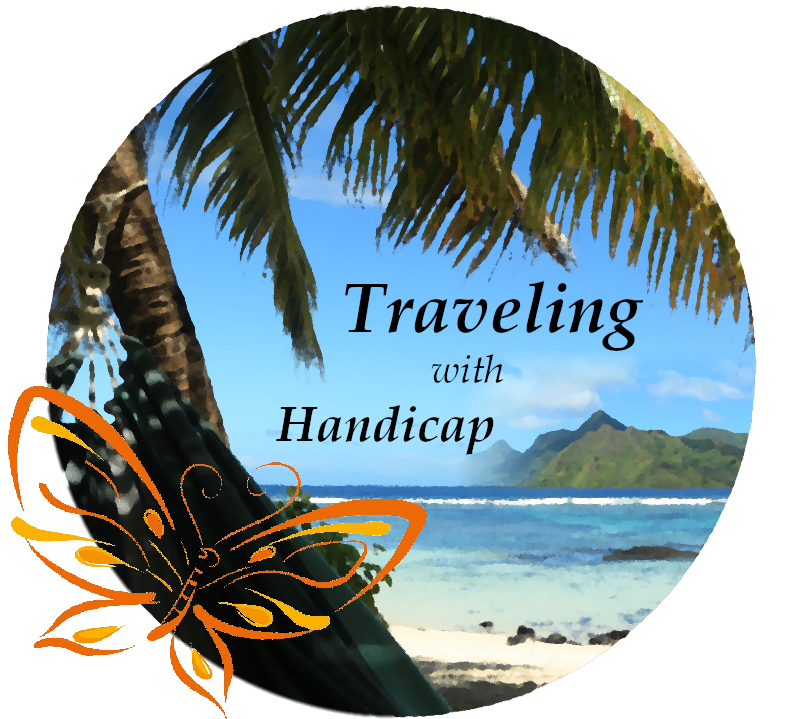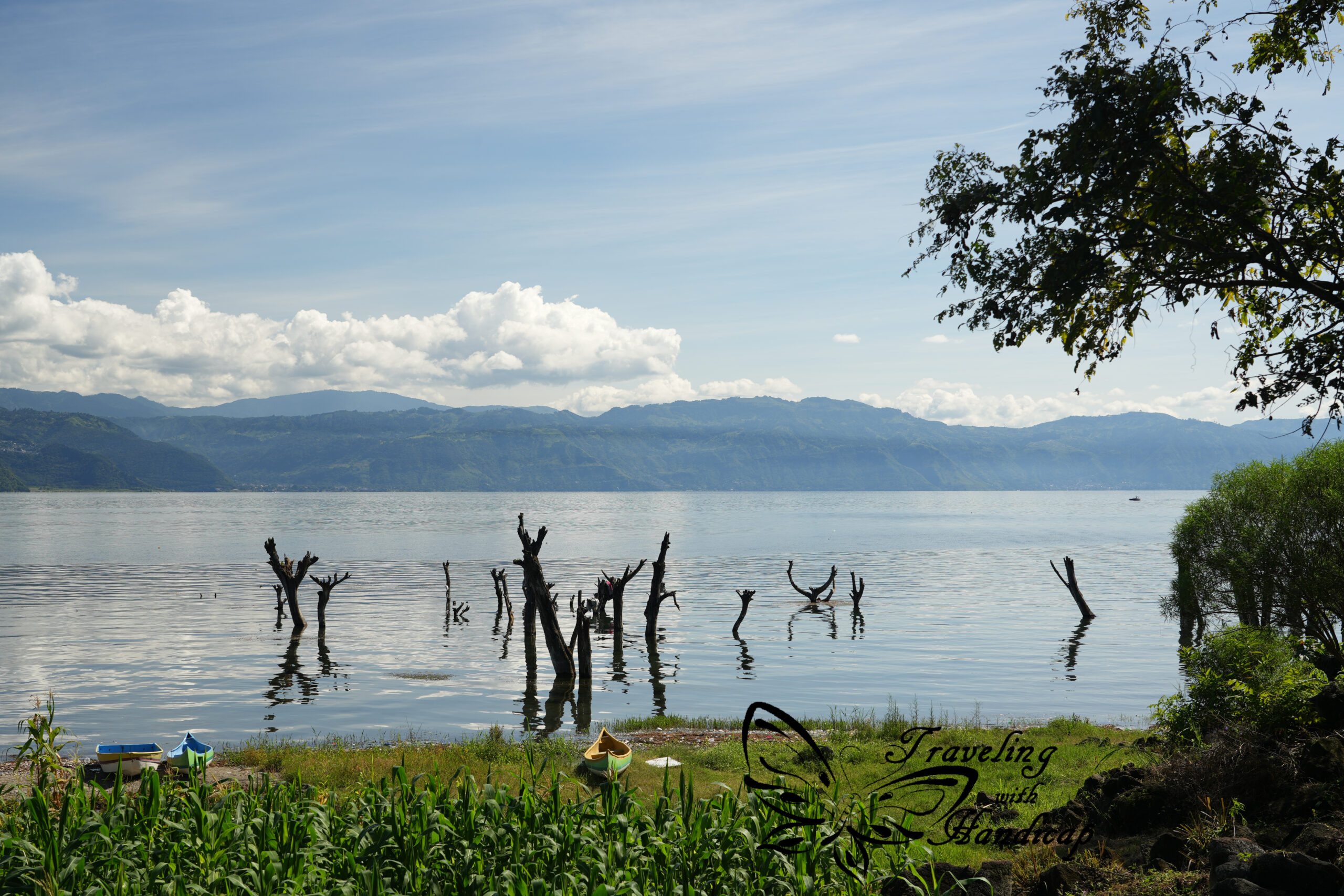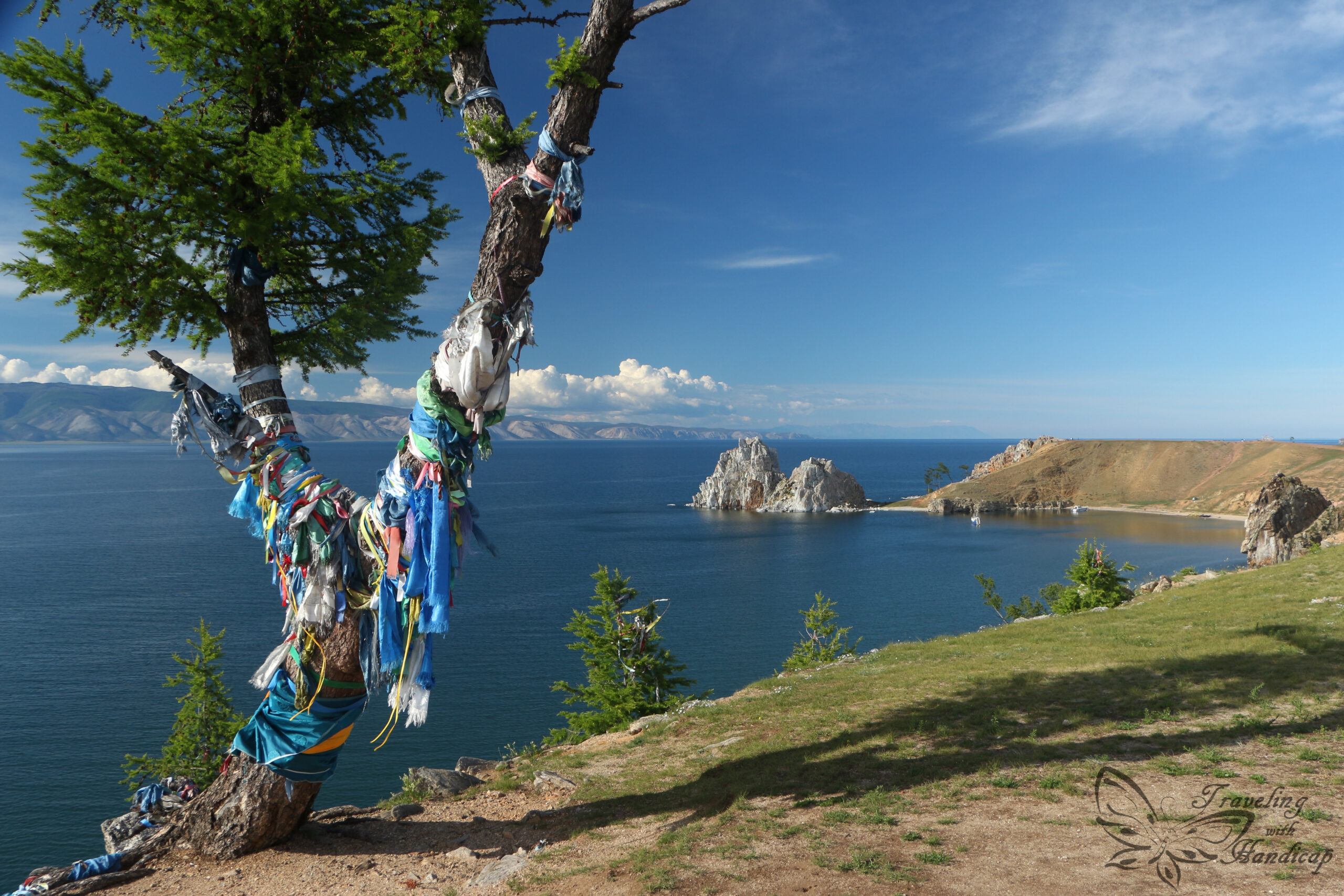Be brave. Take risks.
Nothing can substitute experience.
Paulo Coelho
From Buenos Aires up north
Until now, I have only traveled by plane, bus and ferry, with the clear majority of bus journeys. Argentina currently expands and renews its railway system. So I thought about taking a train from Buenos Aires in order to get north. There is a long distance train from Buenos Aires to San Miguel de Tucumán, which I considered. However, the Retiro train station in Buenos Aires has been under construction during my stay. This is why I wasn’t sure which train would depart from which other station.
Moreover, the online booking system corresponded to the Argentinean ID card, I couldn’t fill everything and as such not book online. Since the trains depart not even daily, but buses depart multiple times, I went with a night-bus instead. I wanted to avoid getting stuck in Buenos Aires because of a missing train ticket. Without the train ticket, I could have taken a plane to Salta (what many tourists do). When thinking about the train, I checked out Tucumán and liked the appearance. Therefore, and also because I try to take as few flights as possible, I went to San Miguel by bus.
I didn’t see much during the night. Moreover, I’ve been sleeping quite well. When I woke up, I was surprised how green everything was. I have read about Tucumán being the “garden of Argentina”, couldn’t imagine, though. Firstly, we crossed the region Santiago del Estero during sunrise. I don’t know anything special or touristy about the region. The only surprising sights were some very modern buildings, including (I think) a stadium in the city of Santiago del Estero. Apart from the few really modern buildings, the city looked very similar to many other (colonial) cities of Argentina.
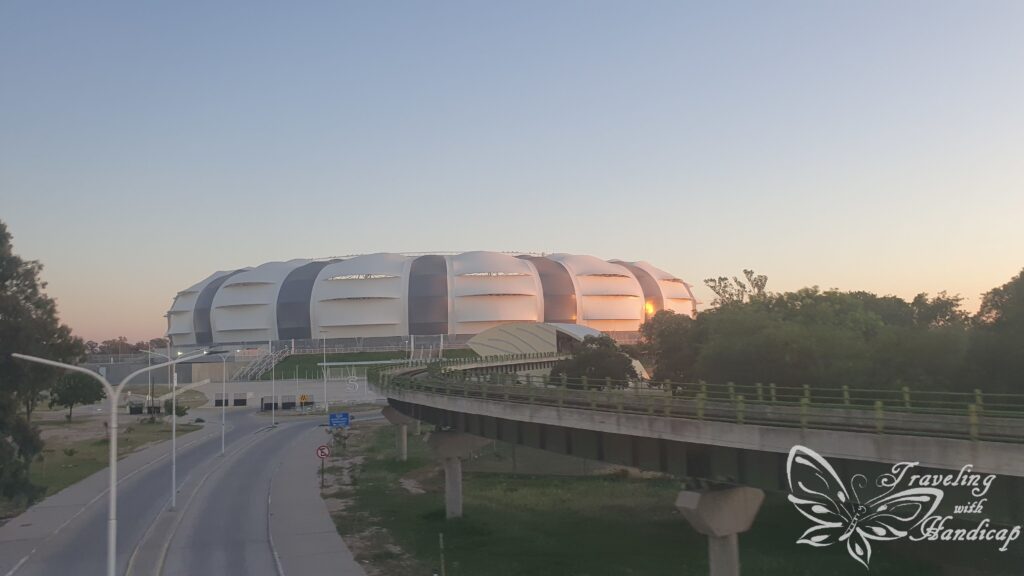
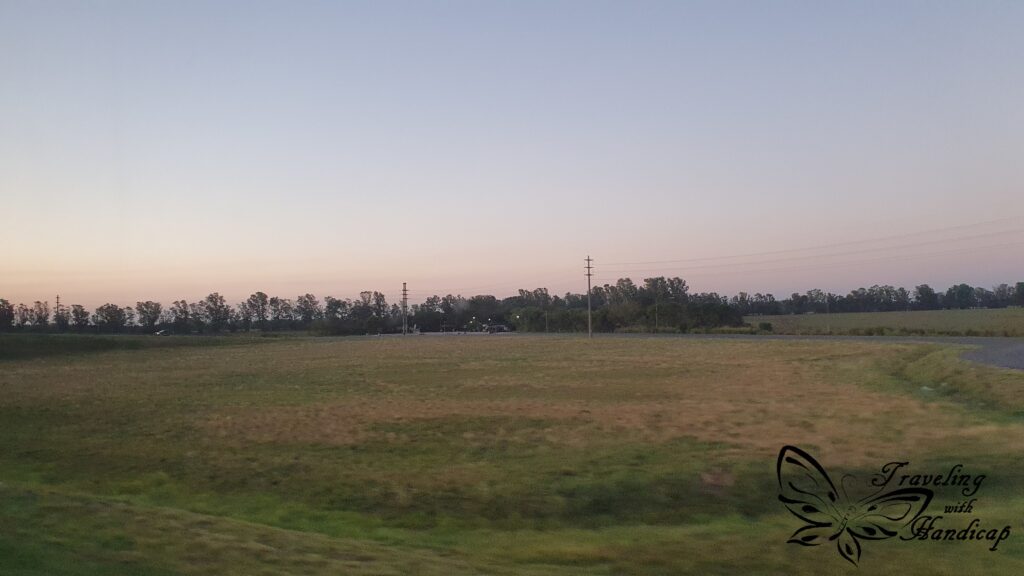
Tucumán
My first stop was in the capital of the the smallest province of Argentina, San Miguel de Tucumán. It is quite common to only talk about “Tucumán” if you’re indeed talking about San Miguel de Tucumán. Or you call it “the capital” while you are within the province of Tucumán. After the capital, I went to Tafí del Valle by bus. This was when I figured out that this route – and as I learned along the way – all continuing routes I took within this region, are so much nicer to travel by car. I didn’t rent one all the way since it is still too expensive for me alone (without a group).
Having your own car increases the flexibility in where to stop, since there are often really cool spots along the way. Even though I don’t know how to use a motorbike, I assume these roads are also great for biking. For sure, there are more great routes for bikers. Nevertheless, I have seen many bikers and therefore would like to point it out.
San Miguel de Tucumán
San Miguel is an enjoyable colonial town. If you stay in the center and walk around on a Sunday, it is far less dangerous than in Córdoba. Actually, I arrived on a Sunday, similar to Córdoba, and went around without fear. I pre-checked in the hostel if it’s safe, for sure. In the few streets close to the main square, the presence of the local police is quite high. I didn’t see weird-looking people walking around. Later I realized that police approached all people who looked like beggars.
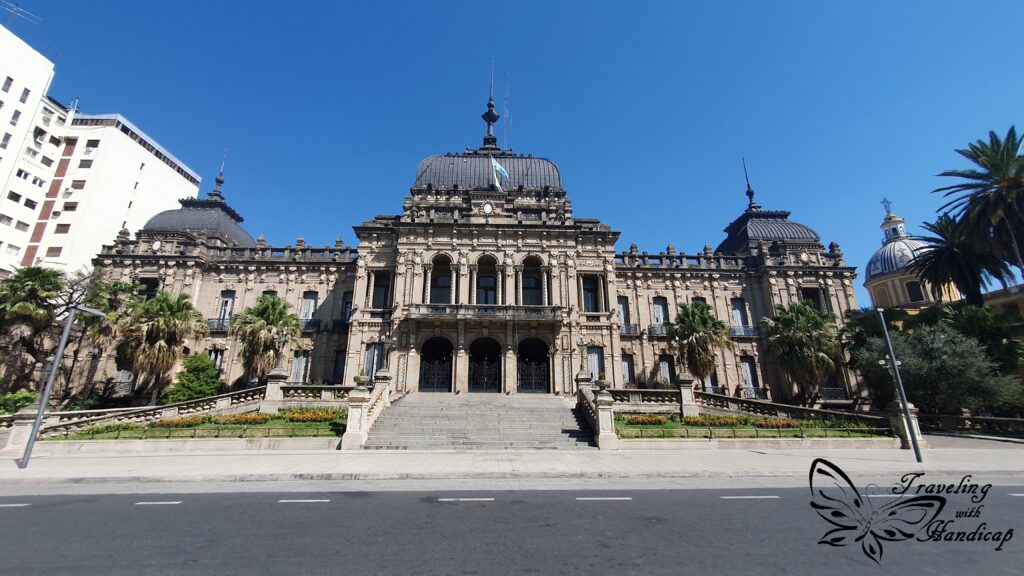
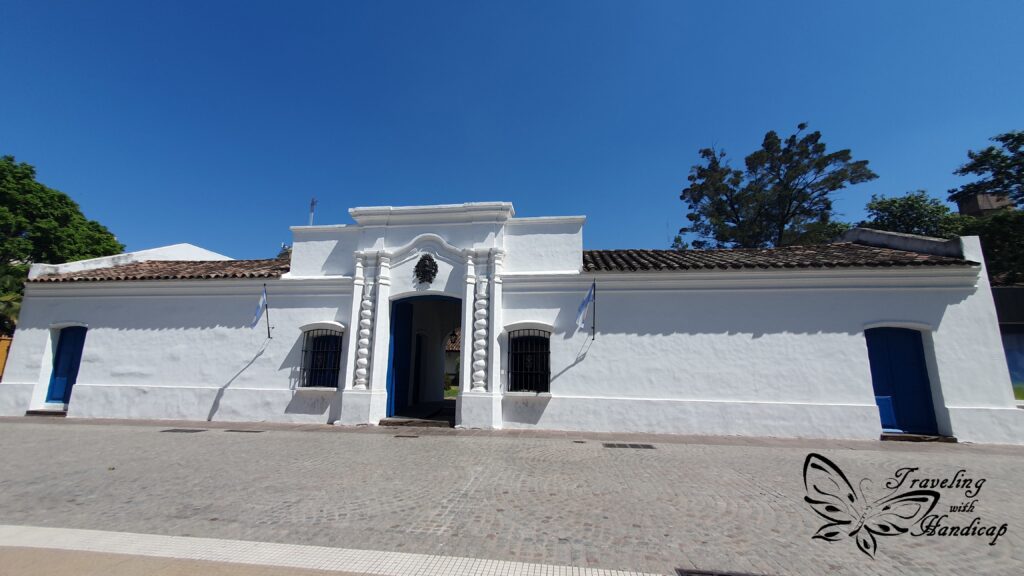

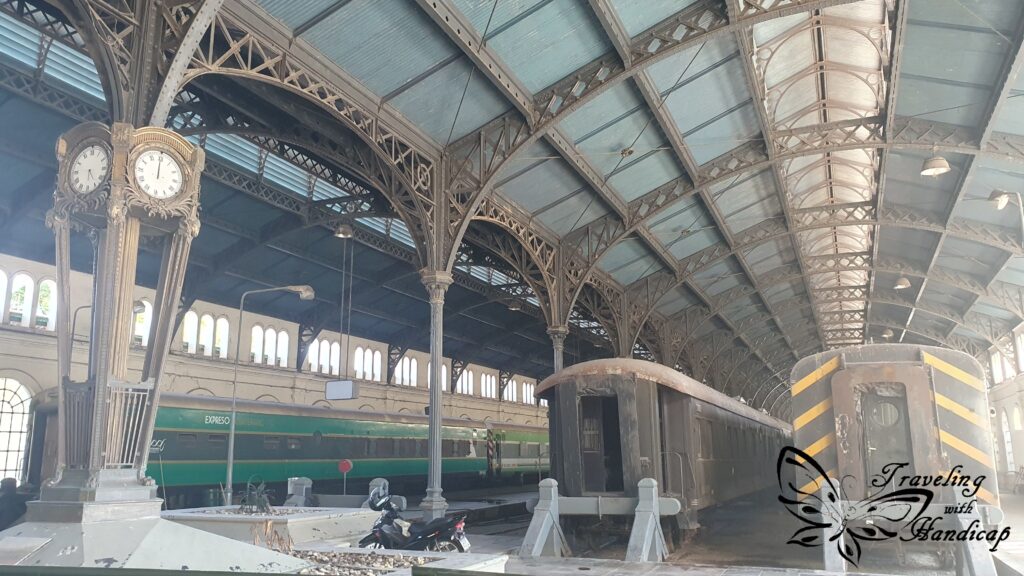

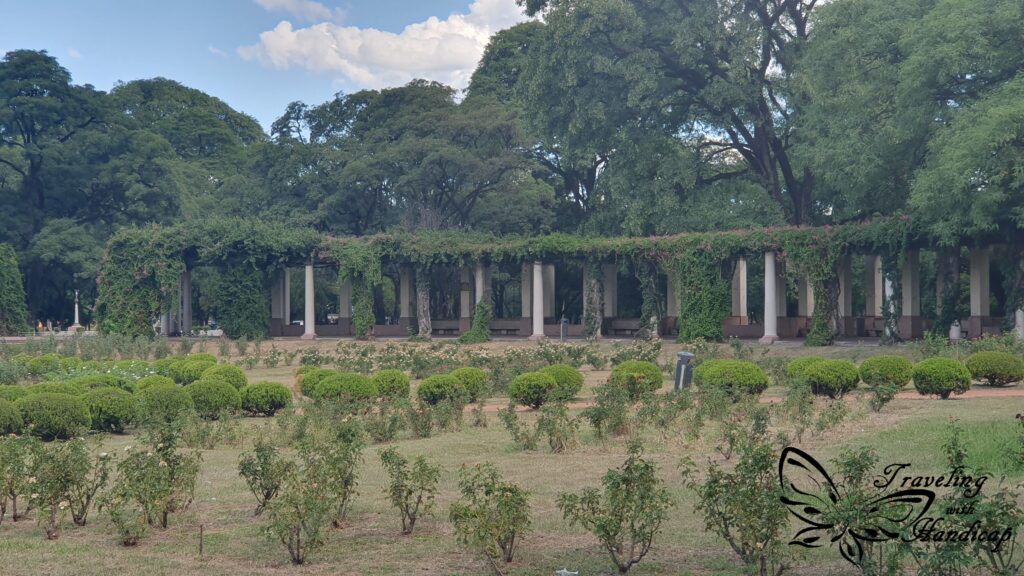
Honestly, the colonial towns are similar to each other (except for Buenos Aires). So if you visit some of them, at one point you feel repetition. This is why I stopped in Salta (more later) but not in San Salvador de Jujuy anymore. Tucumán was the only city in which I was still on the road during sunset. Thanks to all the police, I waited for the colorful lights of the Casa de Gobierno after sunset and walked back to the hostel quickly.
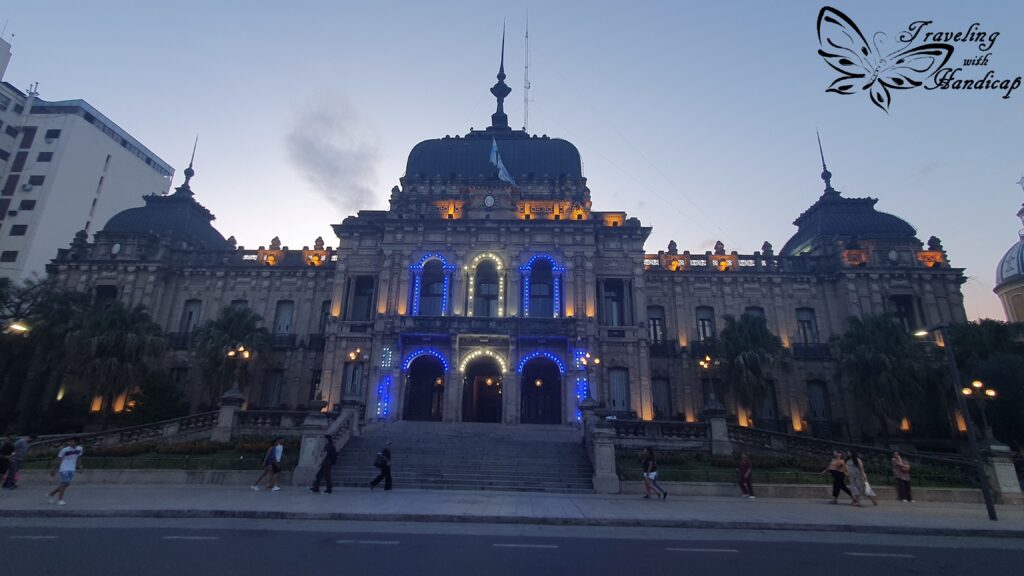

El Cadillal
From Tucumán I made a day-trip to El Cadillal, a tiny town at the Lago El Cadillal. The town of El Cadillal is worth a visit for its great views over the lake. There is a public bus connection from Tucumán taking approximately one hour to the lake. Swimming is possible, I preferred to have lunch, go for a walk along the shore and take the Aerosilla. It opened at 3pm and from the top of the hill, the view of both sides, the lake and the back side was great. From the “back” side, one could even encounter Tucumán in the distance.
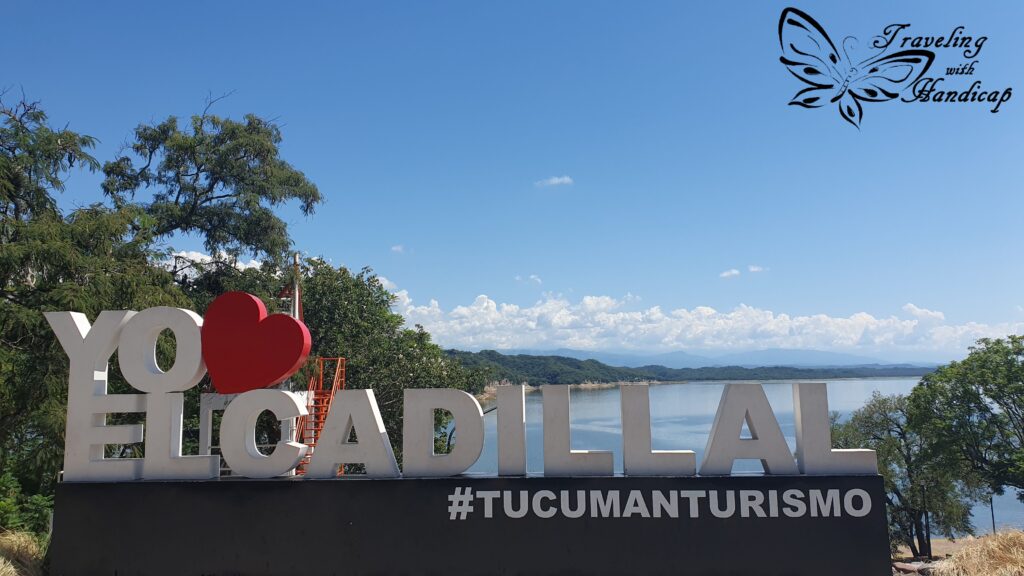
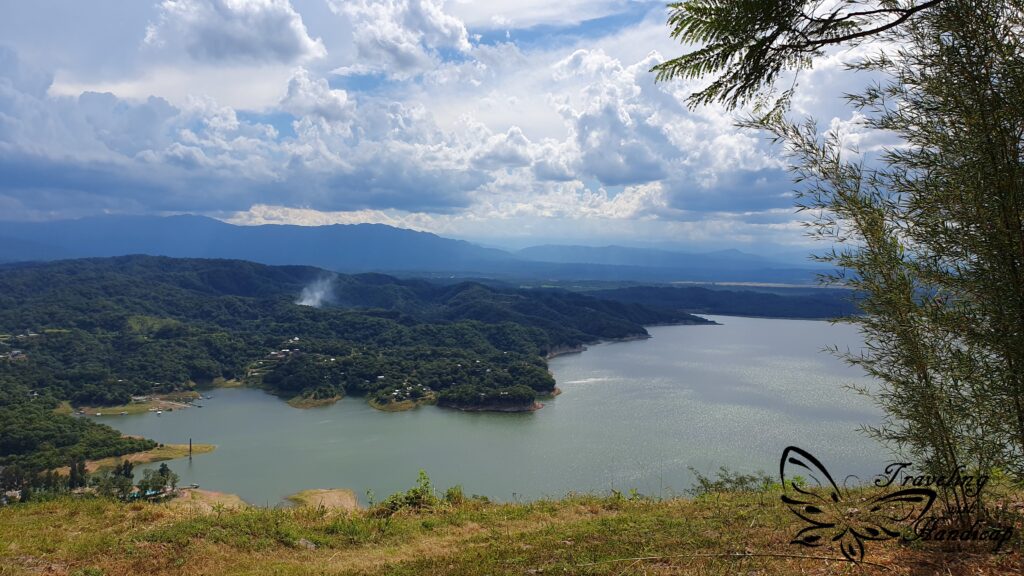
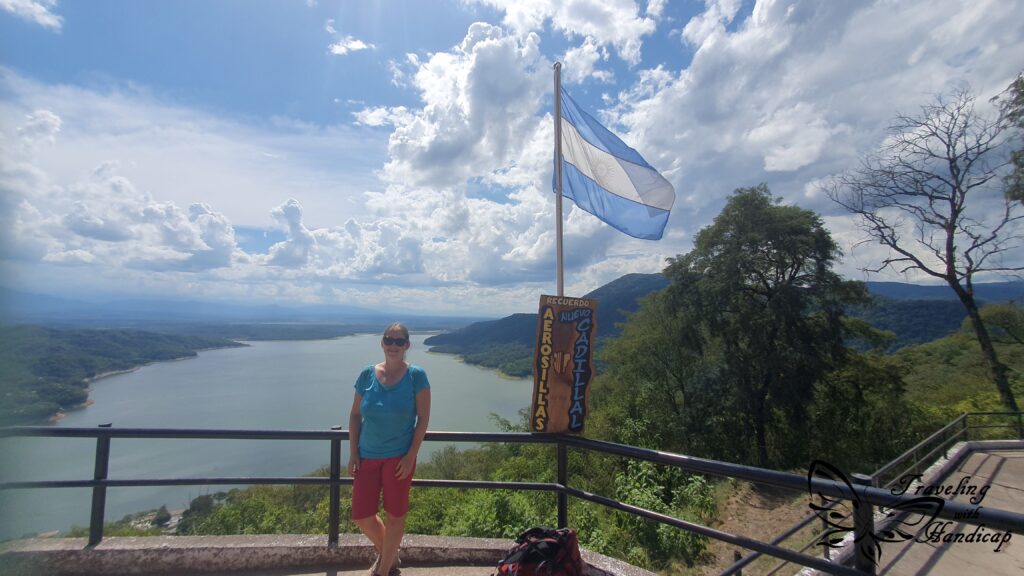
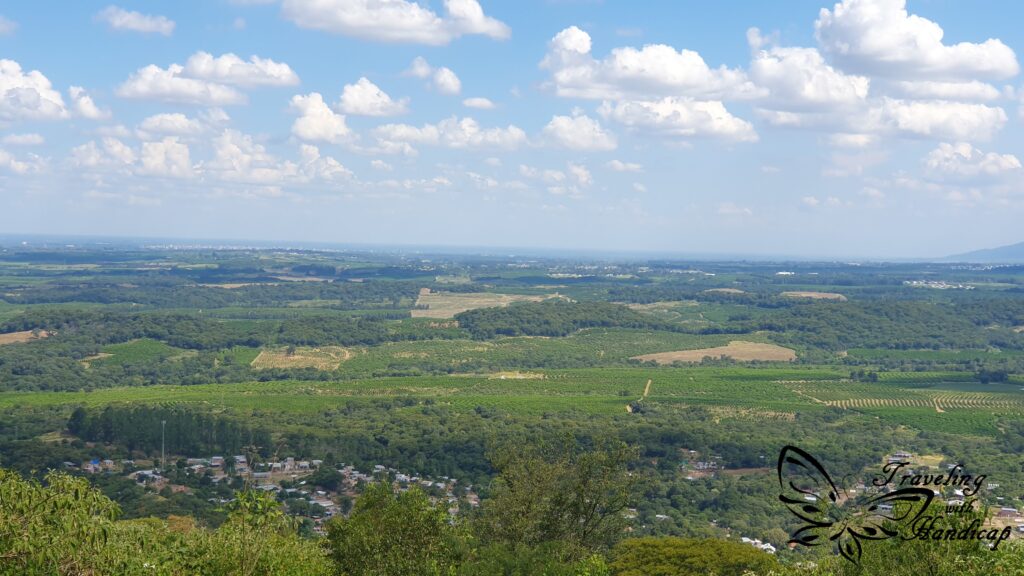
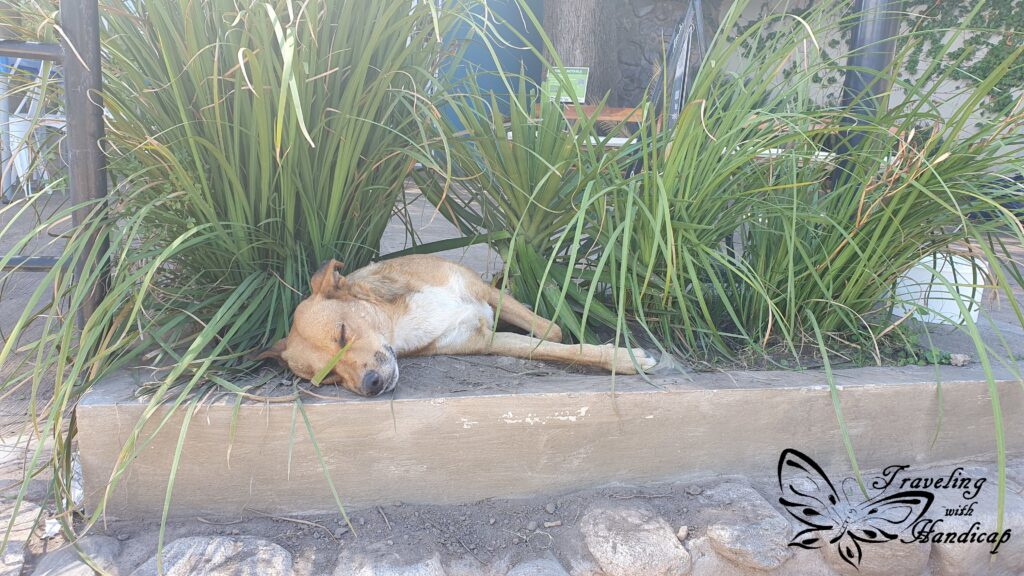
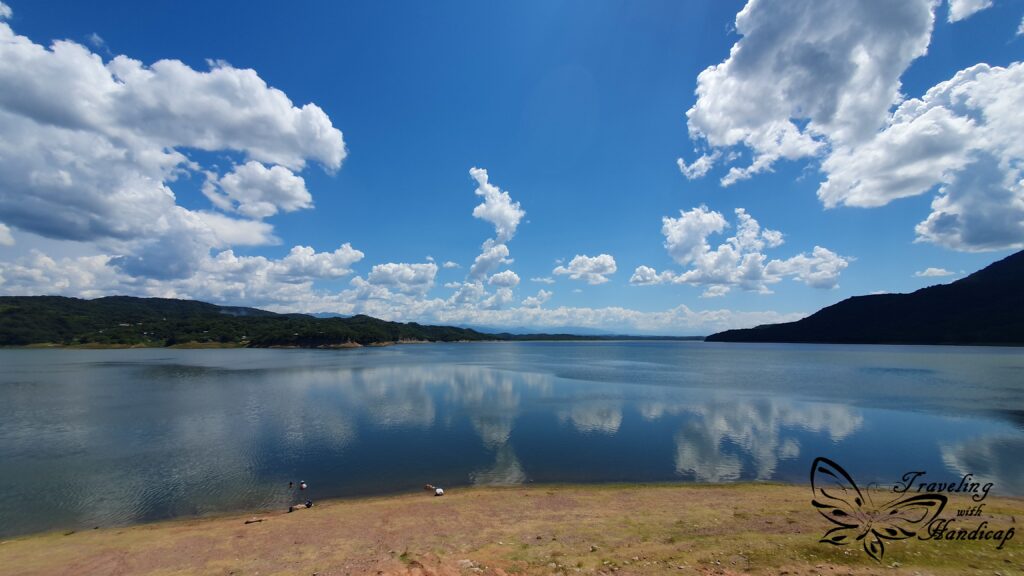
Tafí del Valle
From Tucumán I took a bus to Tafí del Valle. The rout was very nice, I wished I had a car. The road went higher and higher, into dense green forest covering the mountains. Before reaching Tafí, the bus stopped in El Mollar, the town at the opposite side of the Dique la Angostura. To me, Tafí seemed to be more touristic. There are pros and cons for tourists staying mainly in one town for exploring an area.
All other travelers of the hostel I stayed in came by car. So on one day I got the chance to go hiking to the Cascade de los Alisos with a guy from Córdoba who took me with his car. The first half of the hike was nice, the second one I didn’t like. Since we were not in Patagonia, no track marks were anywhere, it was more like a guessing game where to walk. Thankfully, a little dog from the neighborhood followed us all the way and even showed us the way. When I took a break, the dog even sat next to me checking if everything is alright, so cool.
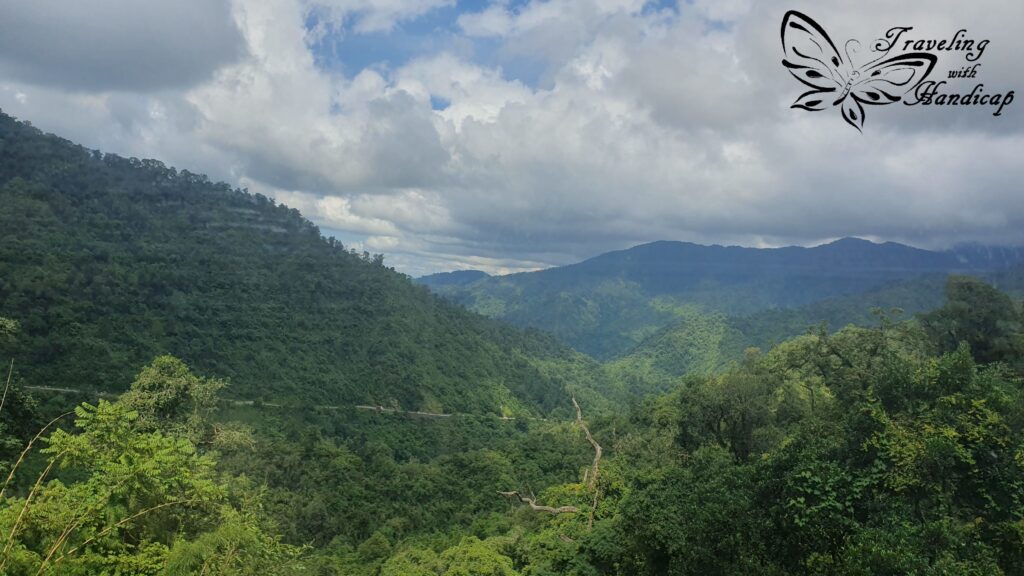
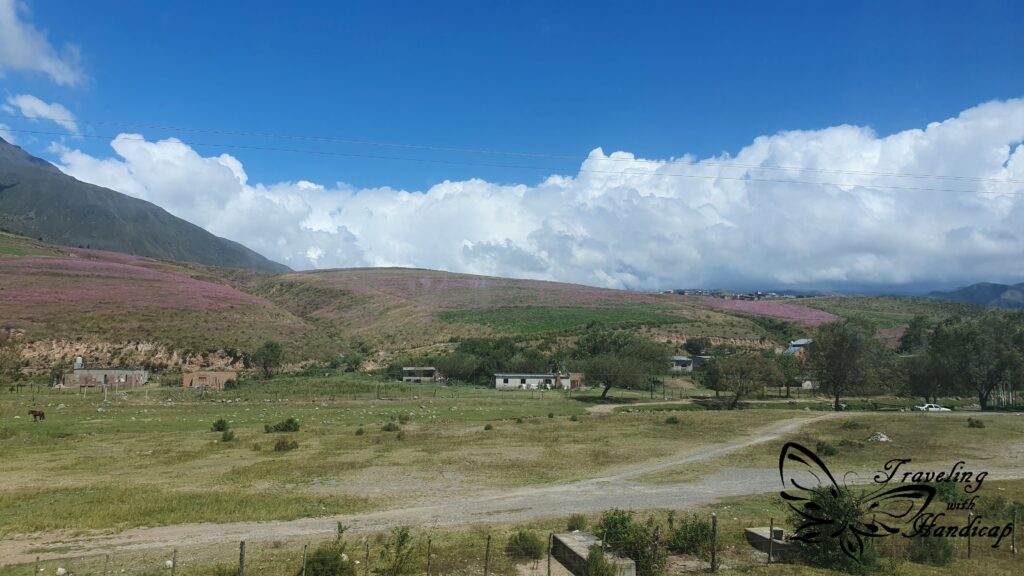
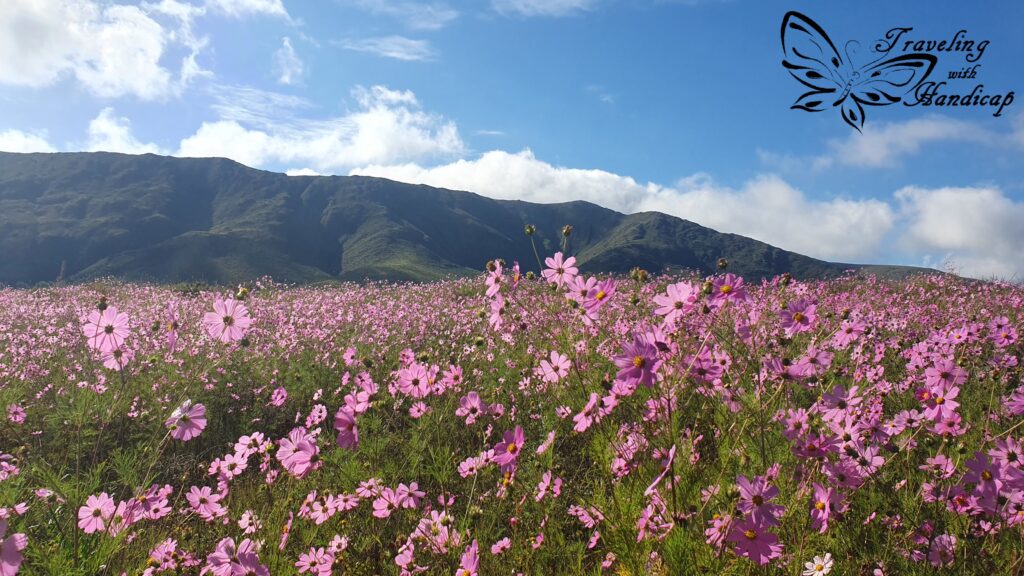
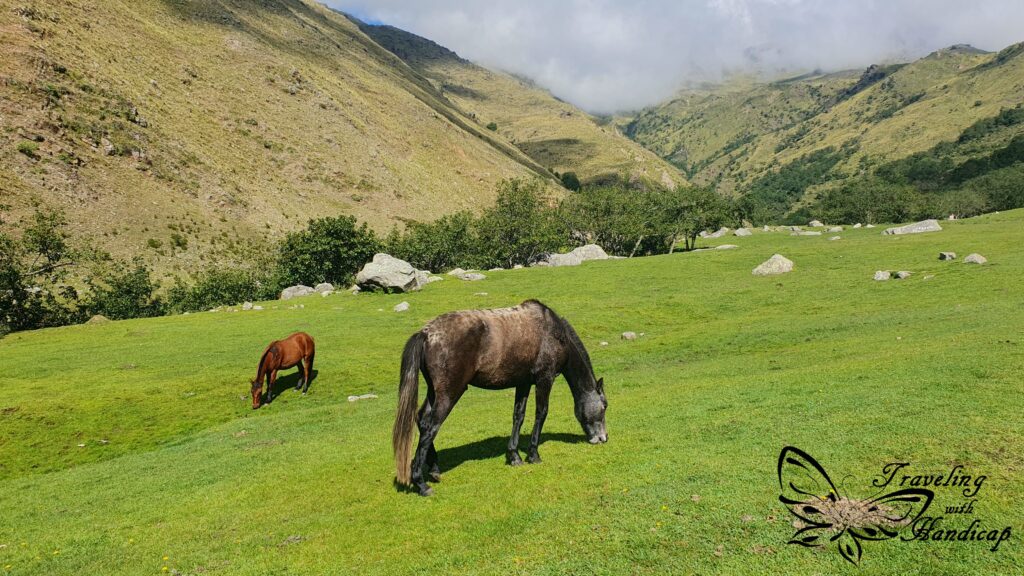
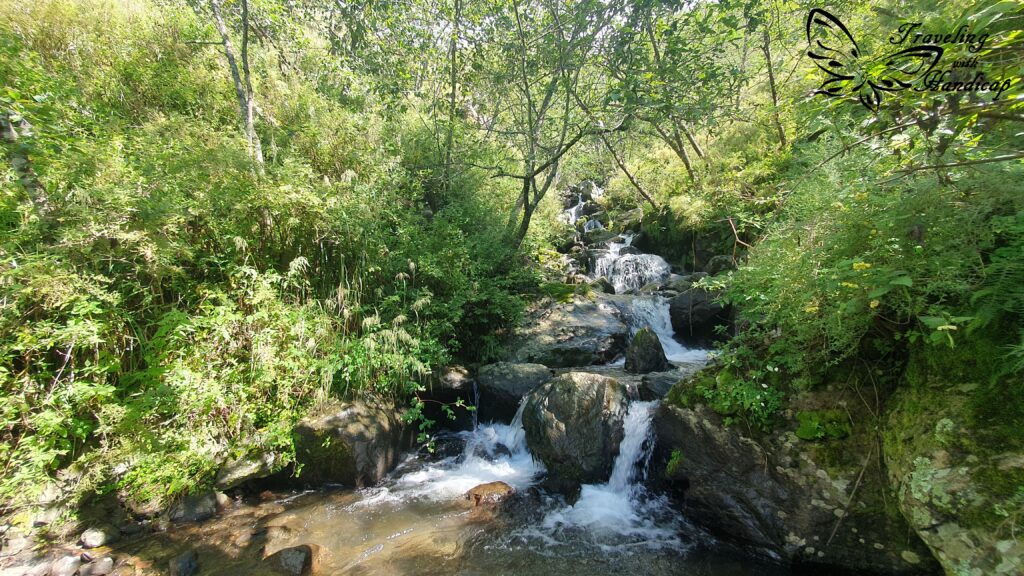
Salta
Cafayate
From Tafí I initially thought about taking a bus to Cafayate. Two girls drove the same way, stopping at the Quilmes ruins and for vine tasting. I and another girl were able to come with them in the car. Very convenient since I thought about visiting the ruins on the way. It would have taken much more time with the bus, getting off, hitchhiking to avoid a 5 km walk in, hitchhiking for the way out and then waiting for the next bus.
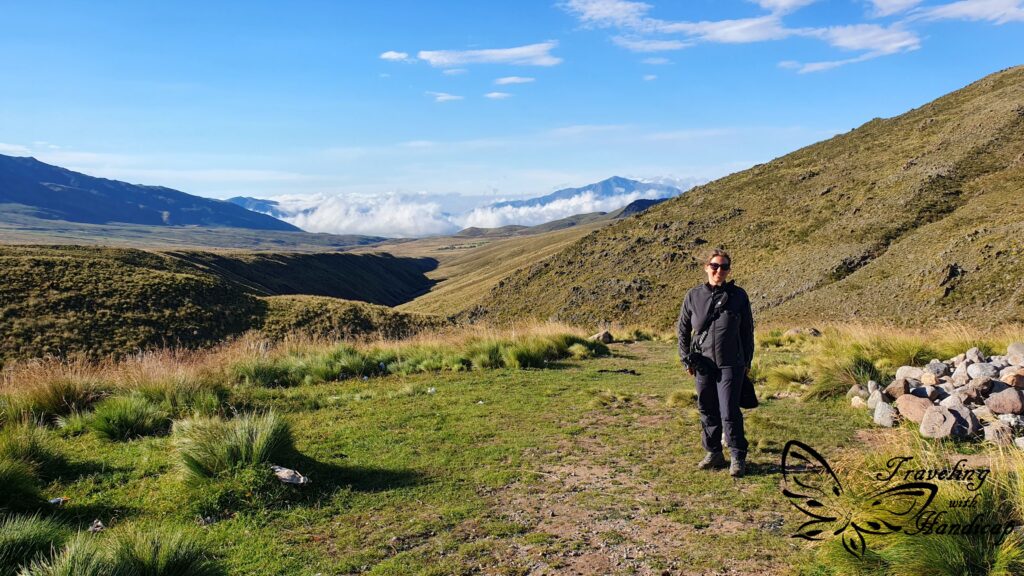
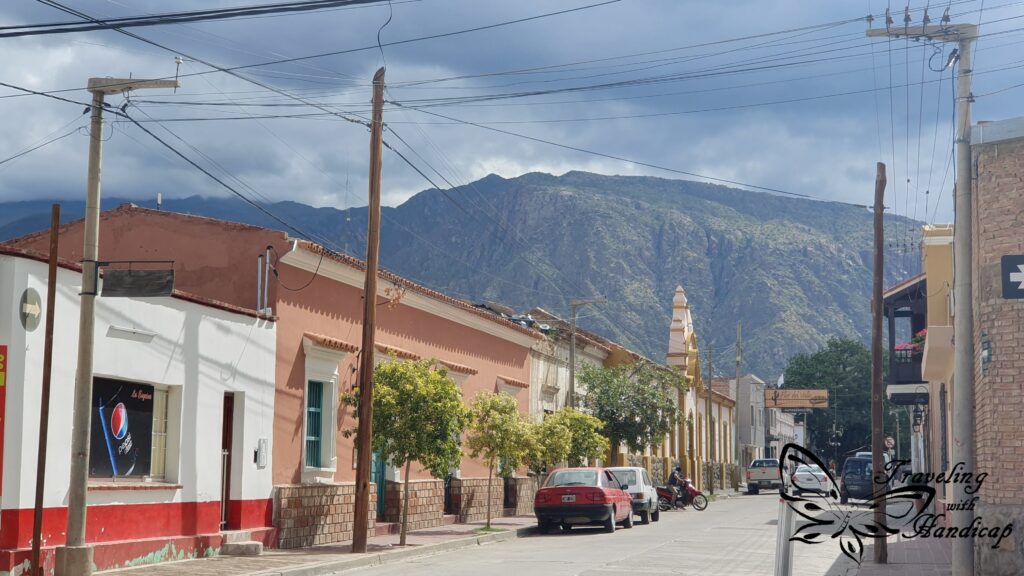
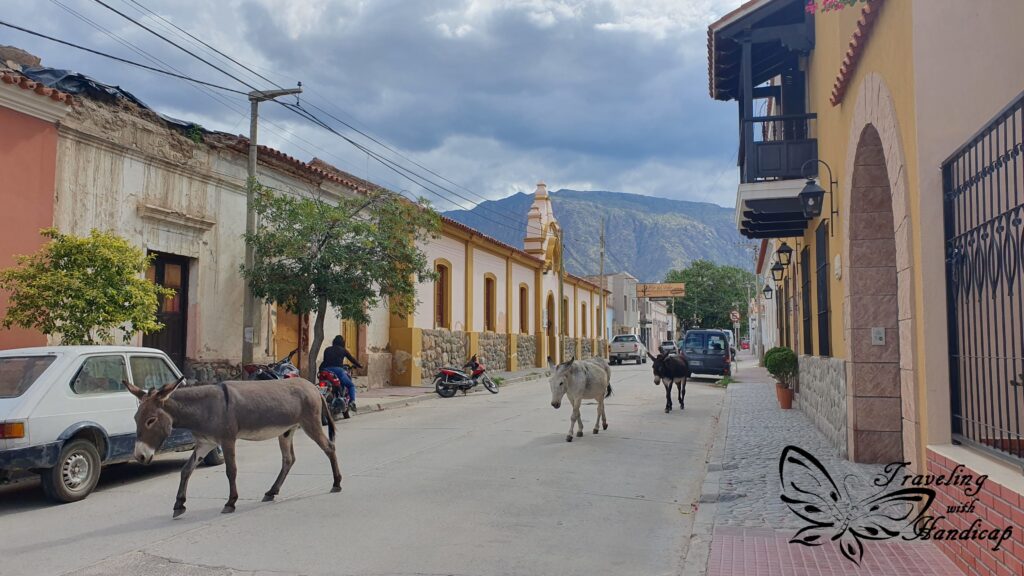
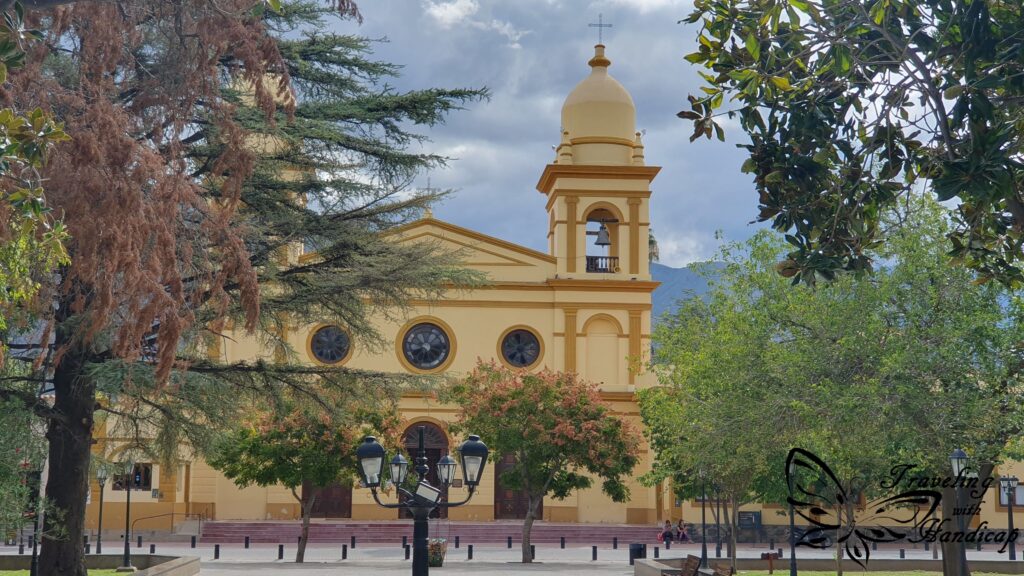
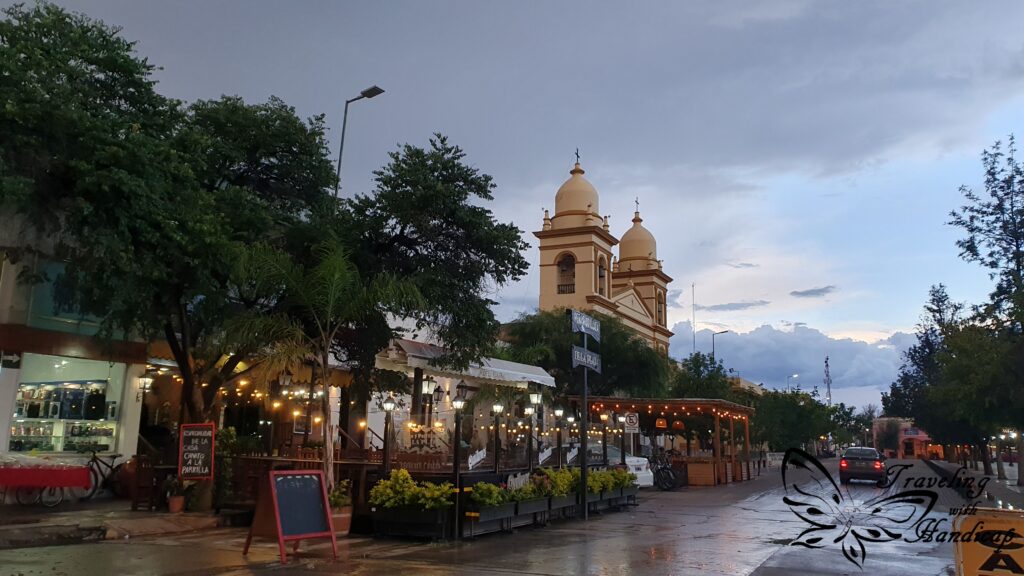
In Cafayate, I also had really great local food. Empanadas are a lot better up here compared to southern Chile or Argentina. If you want to try local dishes without getting sick from “bad” stuff, Cafayate makes it possible. 🙂

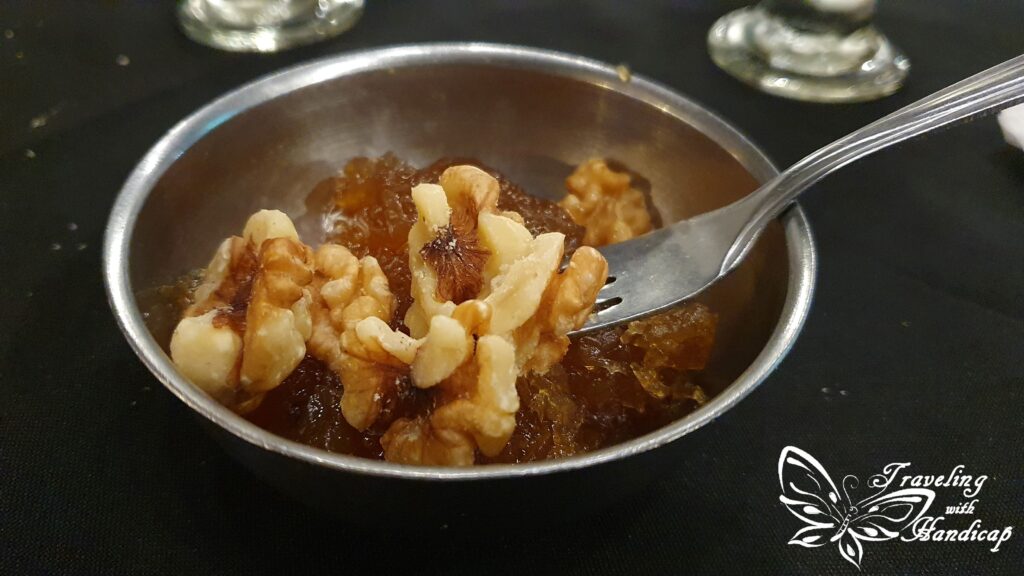
Quilmes Ruins
The Quilmes ruins are ruins of a town of the Quilmes people, living at the same time and next to each other with the Incas. It is very interesting to visit the museum, since this is the only way to learn something about the Quilmes people. The ruins look quite similar, so don’t occupy a lot of time. The nicest view over the ruins is from a little up the mountain, an easy but not accessible walk.
Right after arriving in the hostel in Cafayate, I asked if I can stay for longer since I liked the place. The hostel was very chilled, a great atmosphere with great people. And I also liked the town of Cafayate, quite chilled, good climate, many vines, many handicrafts, and local food. However, most of the vines were too sweet (for my taste) and – the worst – there were so many mosquitos everywhere.
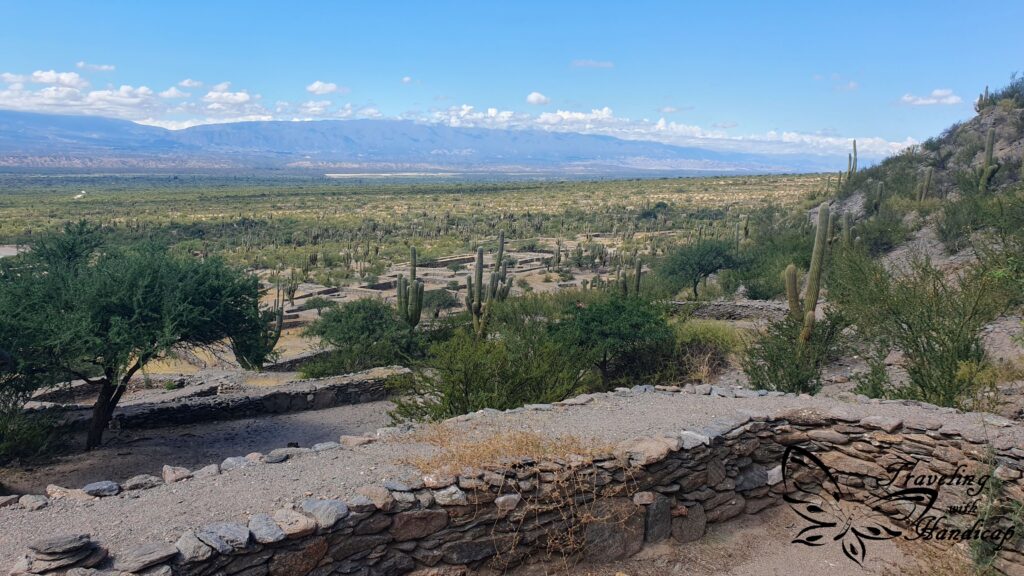
The canyons
On the road between Cafayate and Salta are many beautiful rock formations, canyon-like. I thought about taking the bus to Salta, jumping off earlier and taking another bus back on the same route. Again, it would have been much easier and nicer by car. It was also possible to rent bikes in Cafayate, to take them on the bus one way and cycle back (little downhill but more than 30 km). Again, I was very lucky that a couple who I talked to during breakfast went to Salta by car. They took me to el Anfiteatro. On the way, they stopped at los colorados and tres cruces, showing me their favorite spots which they explored the day before.
You can see one or the other great stone formation from the road, like the obelisco. From the Anfiteatro I went to the Garganta del Diablo, it was literally right next to it. Many tourist tours from Salta stop at these two places (among others, I assume). Theoretically, you shouldn’t climb into the Diablo, I followed the majority of people climbing up a little. Not easy, but beautiful. For the way back to Cafayate, I hitchhiked. Many people have told me that it’s a very safe area for hitchhiking, it was indeed super easy.
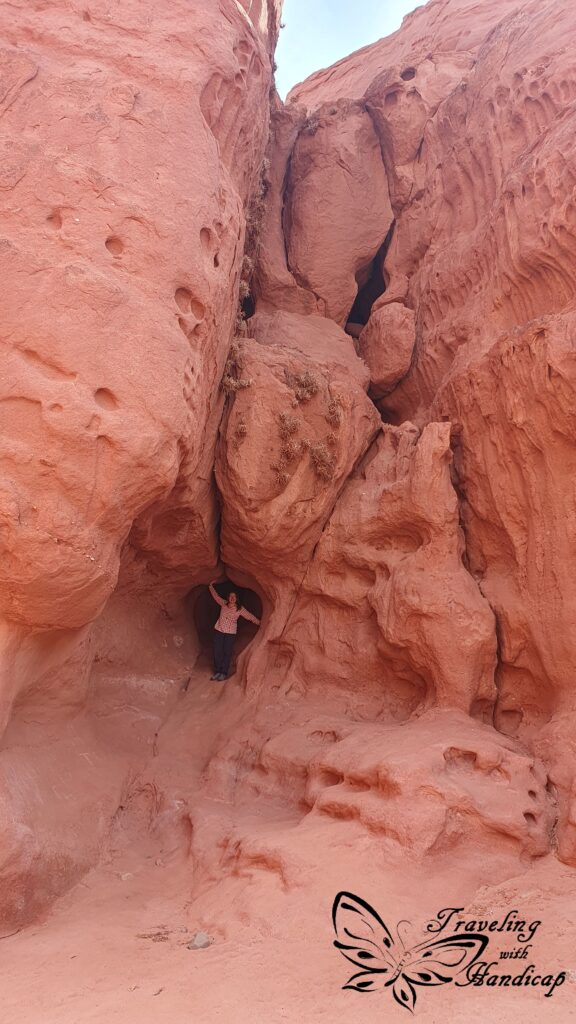

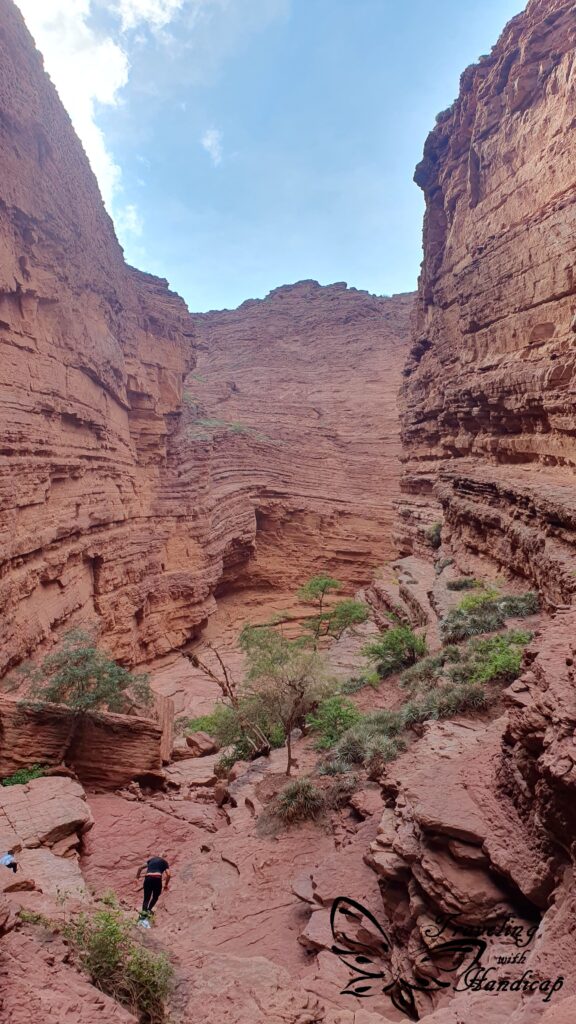
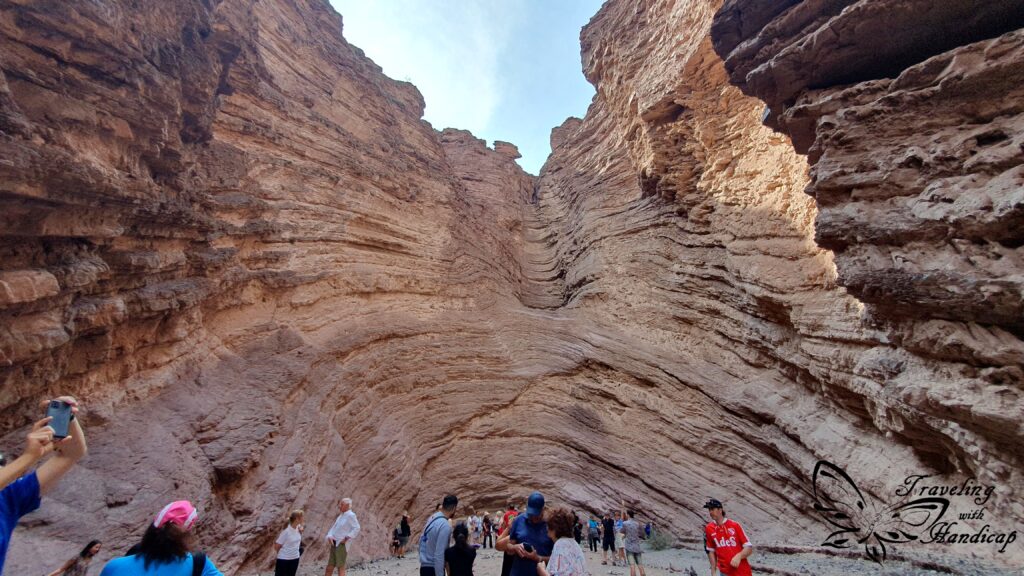
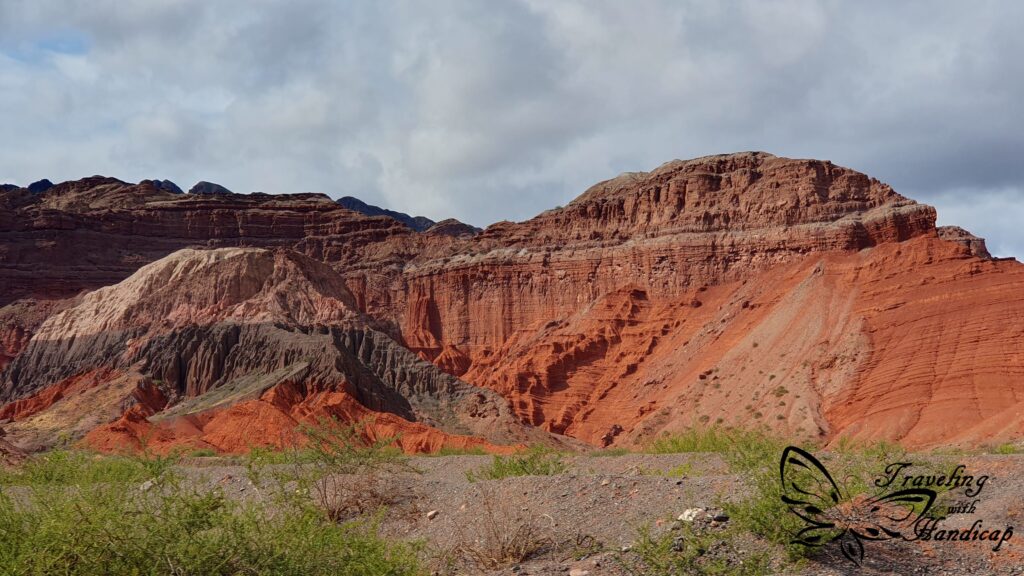
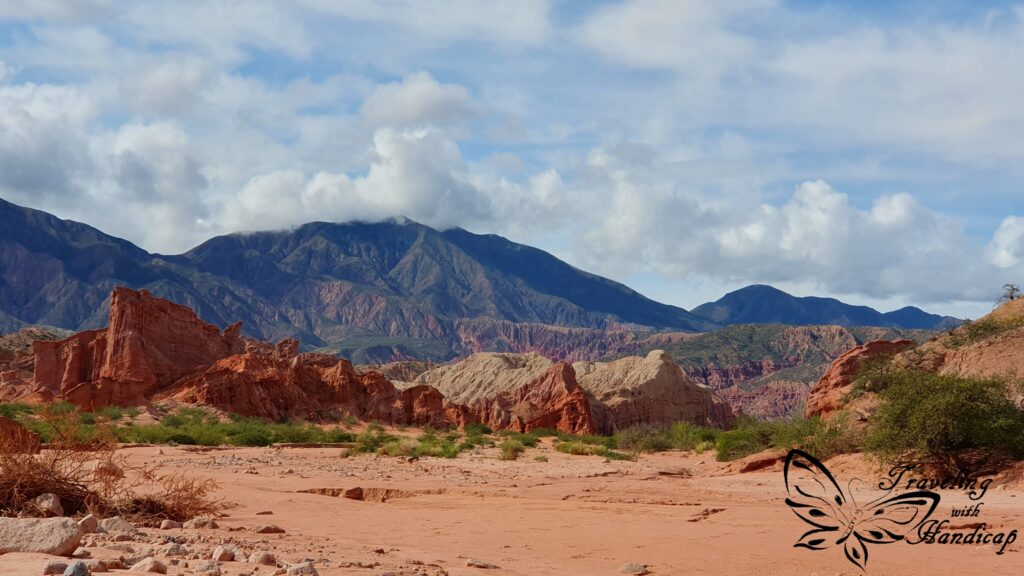
I definitely recommend visiting the canyons, one of the greatest natural formations I have seen until now. Moreover, having conversations with Argentinean people feels much more relaxed than in other parts. I have had a wonderful time in and around Cafayate.
Salta
Salta was the colonial city that many people visit. There are plenty of tours leaving Salta every day, both to Cafayate, Cachi and up north into the Jujuy region. Honestly, Salta was not too special for me. Another colonial city. After visiting some of those cities, they repeat themselves. The one special thing about Salta were two really fancy churches. I’ve seen many young and older people playing folklore music on the streets, this seems to be a thing in Salta.

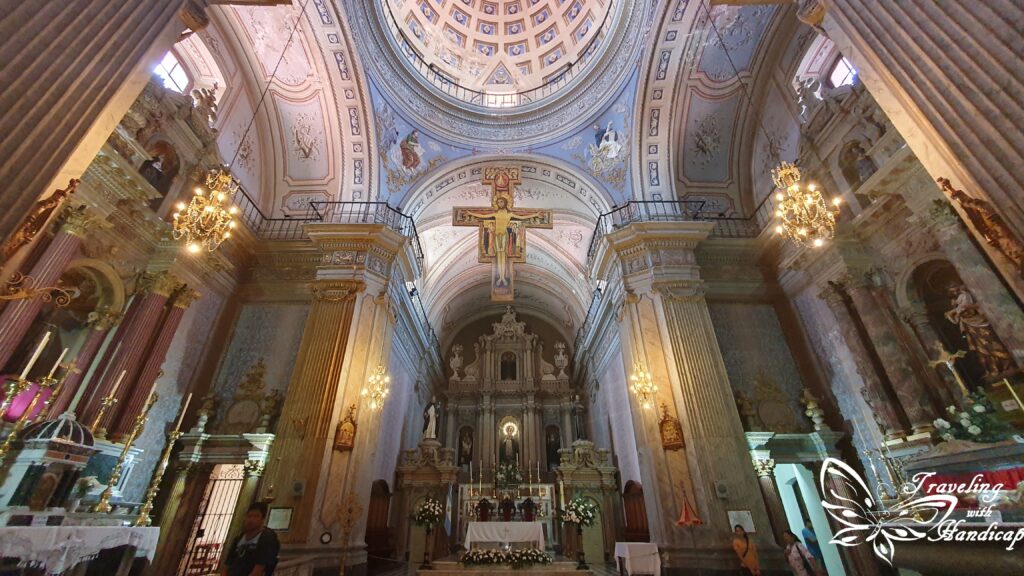

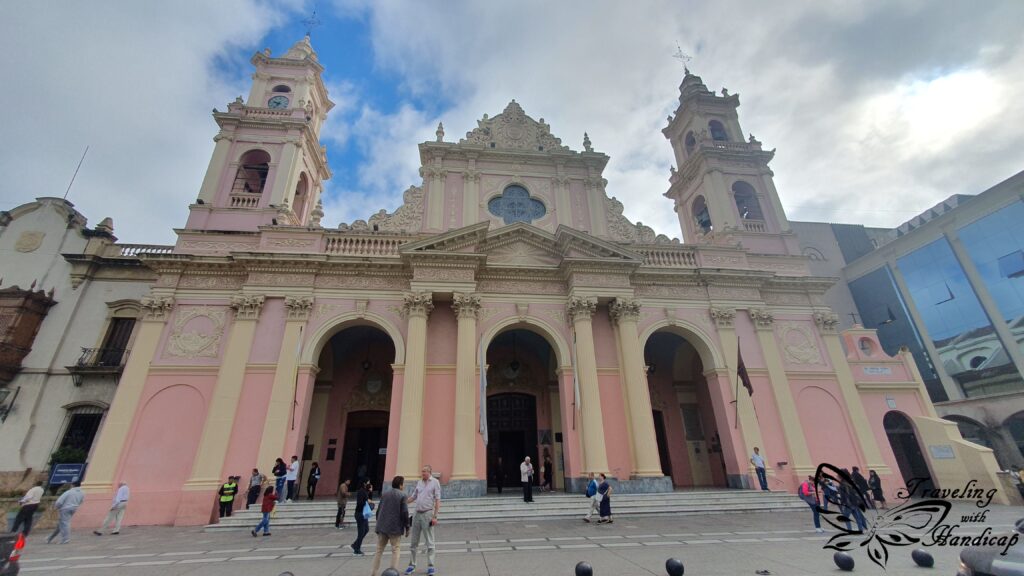
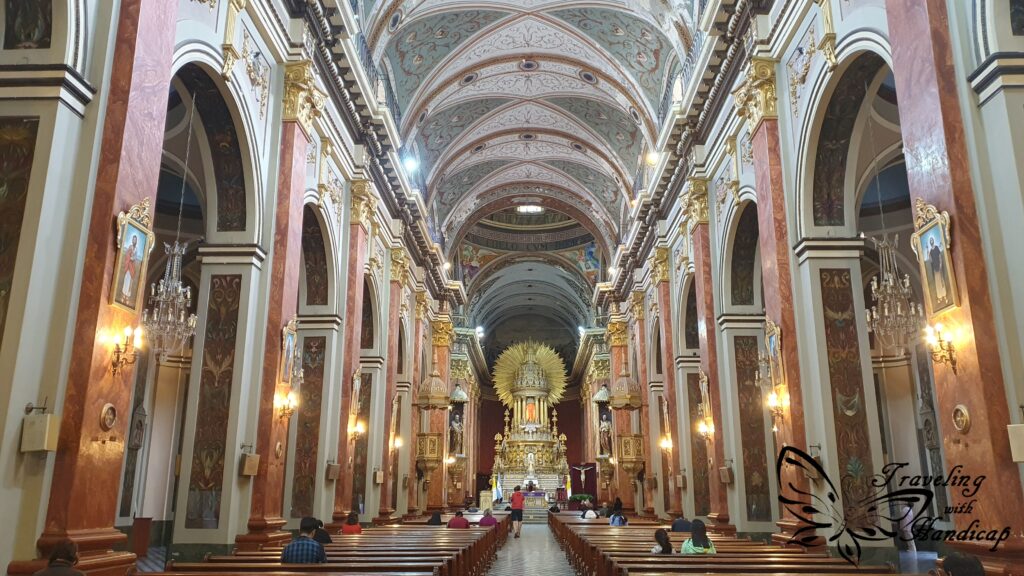
Initially, I wanted to head from Cafayate to Cachi and then to Salta, however, there was no bus between Cafayate and Cachi (service stopped at some time in the past). By car, I would have taken this road. Initially, I didn’t know if it’s worth visiting Cachi. However, when it was raining heavily in Salta for a day, I decided to visit Cachi having a positive weather forecast.
Cachi
The weather was good in Cachi, true. However, even though the village is nice, I would not recommend visiting it as a day trip from Salta by bus. The bus takes 4 hours one way, so being in the bus for 8 hours, on mostly gravel or bad road, just to be in Cachi for 3 hours, is not worth it. Cachi is pleasant, but if you visit San Pedro de Atacama or Greek islands in Europe, you’ll see nicer white houses.
There are some great restaurants and you have vineyards surrounding Cachi. Before entering Cachi, you have a beautiful view on the Andes. However, there are not really other things to do. I recognized many tour buses having a stop in Cachi on their schedule.

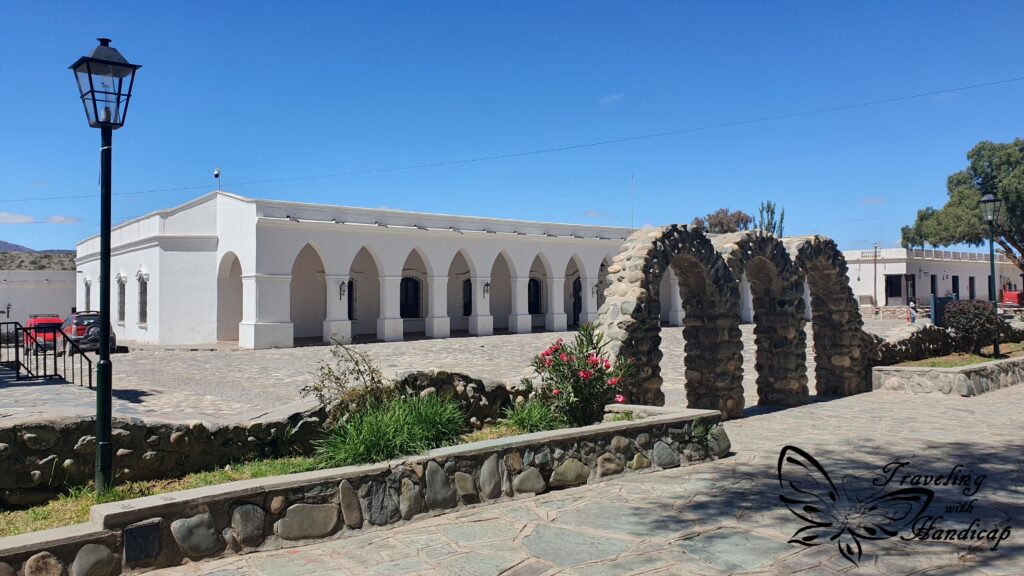
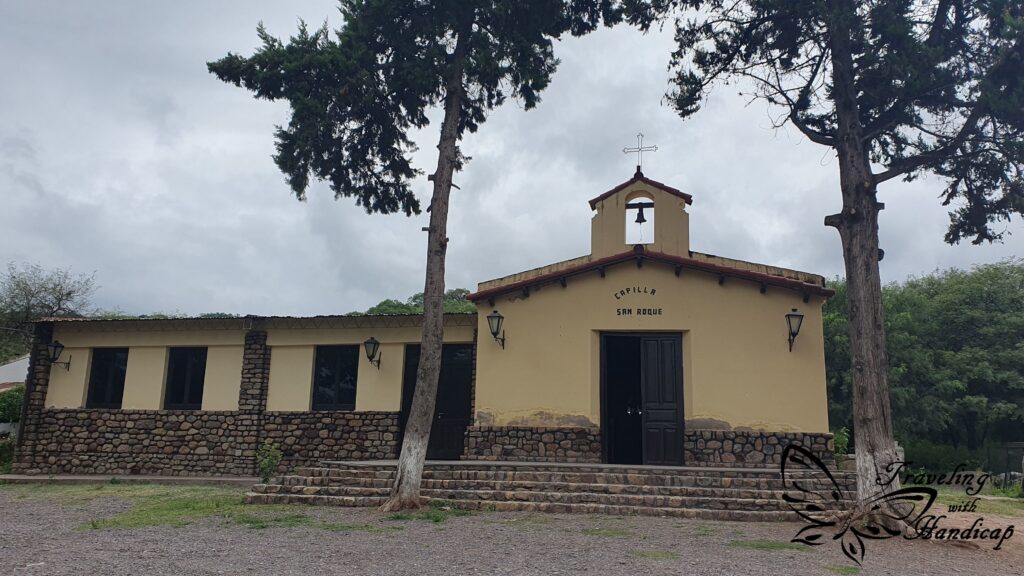
Jujuy
From Salta, I went up north, approaching the border to Bolivia. I have been recommended to go to Tupiza, Bolivia and start a 4-days Uyuni tour from there. I could have stopped in San Salvador de Jujuy, but decided to skip this town. It would have only been a town. I wanted to head further up north, gaining altitude (to prepare for Bolivia) and exploring some mountain formations. On the bus-ride from Salta, I realized that it looks quite green and subtropical around San Salvador de Jujuy. After leaving San Salvador, the more altitude we gained, the drier it became. I stayed in Huamahuaca and La Quiaca before crossing the border into Bolivia.
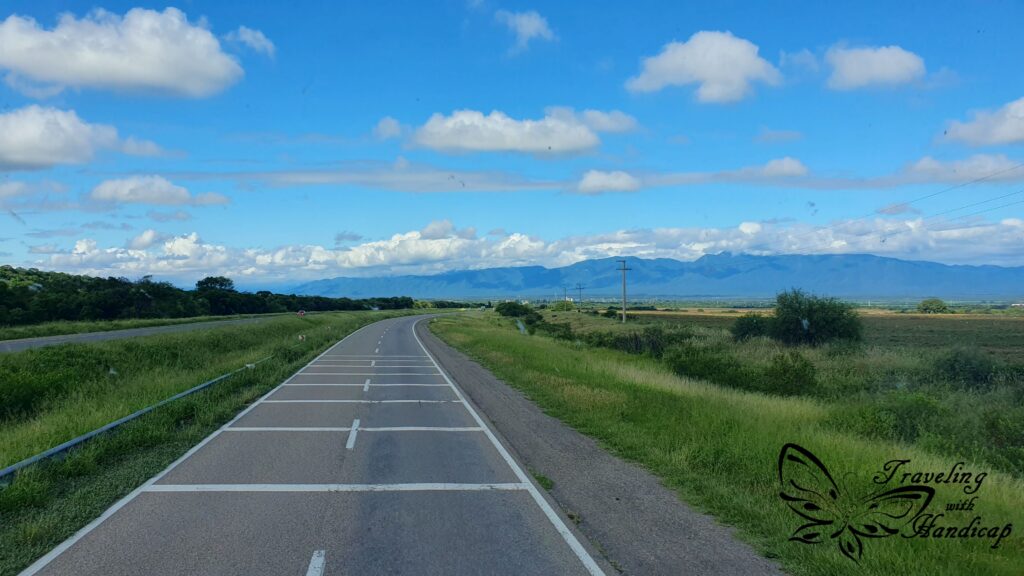
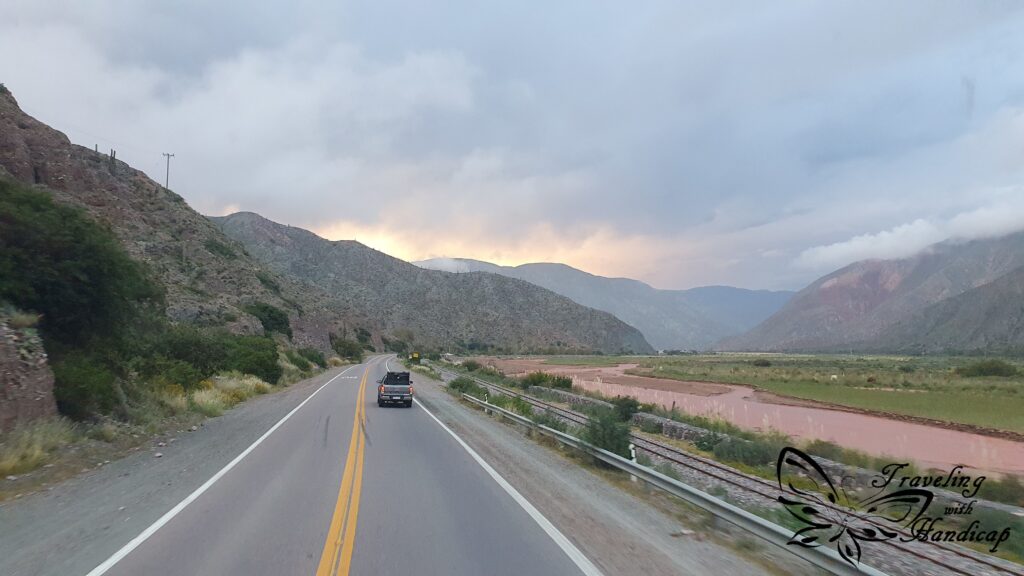
Purmamarca
The Cerro de los Siete Colores is that touristy destination. The little village of Purmamarca is just overfull of tourists. I made a day-trip by bus from Huamahuaca to Purmamarca and Tilcara. I could have also stayed in Tilcara and continued to Purmamarca later. There are so many tours from Salta visiting the viewpoint of the Cerro and continue to the salt flats within Argentina. I didn’t go there since I would visit the much bigger salt flats in Bolivia (Salar de Uyuni).
The mountain formation was cool, however, almost everybody tried to sell handicrafts to very varying prices. I got myself a Quena flute because I wanted to have one, and I couldn’t find any music store selling it in Germany before. No clue how good the flute can be for 3€, not sure if it survives my further 6 months of travels.
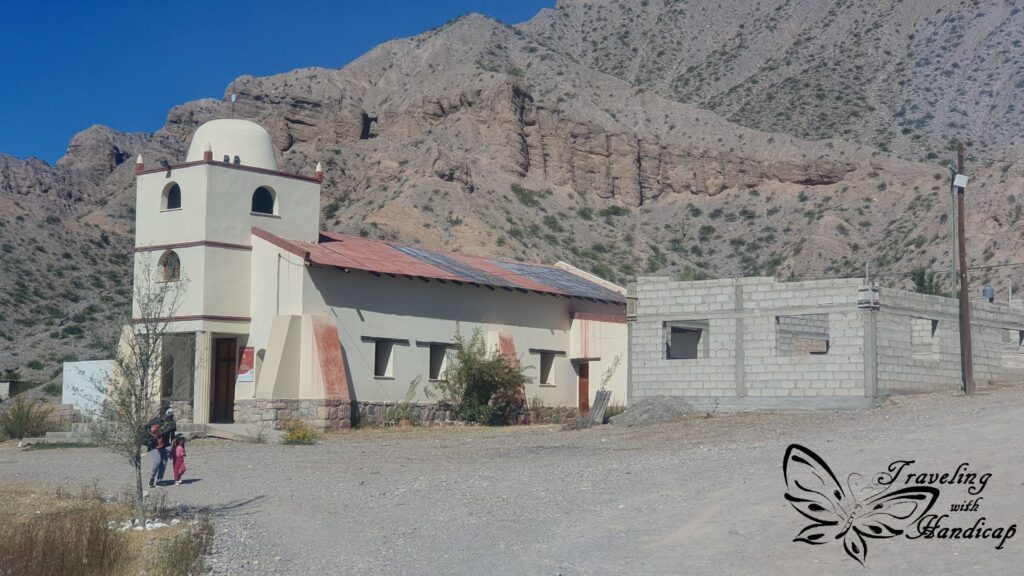
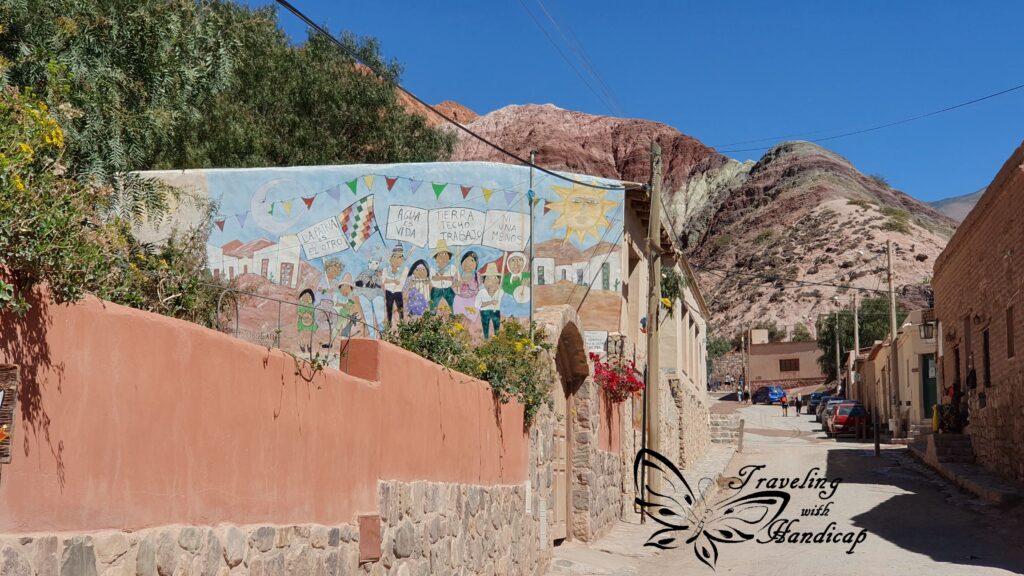
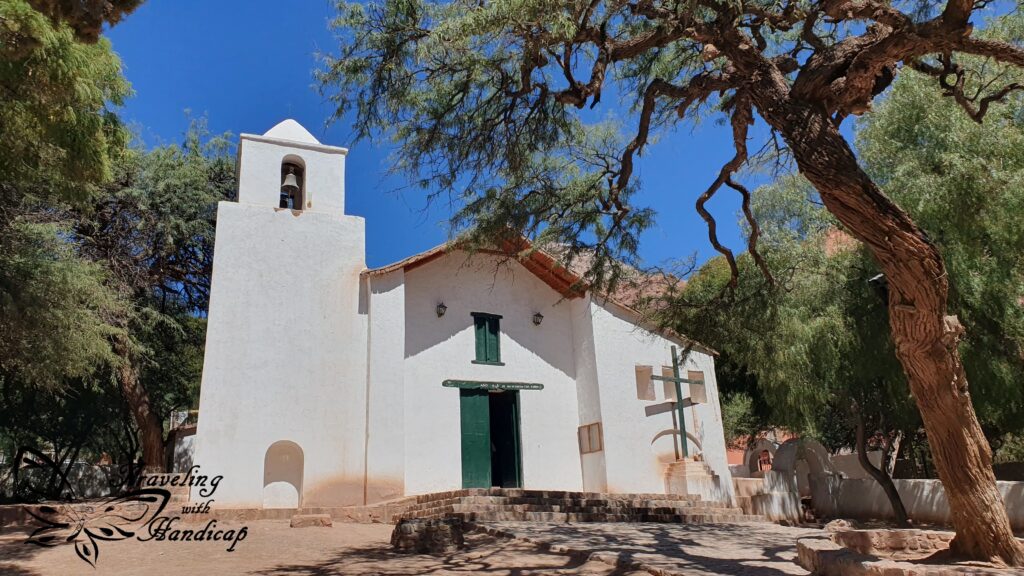


Tilcara
Most of the buses connecting San Salvador de Jujuy with La Quiaca (border town to Bolivia) stop in Tilcara. Not many go to Purmamarca, so I went to Tilcara and took a bus to Purmamarca from there, as there are more. On the return trip, I used the gap between my arrival and the next bus to Huamahuaca to walk around Tilcara. There are many restaurants along the main street. Apart from that, I didn’t recognize any special, individual things.

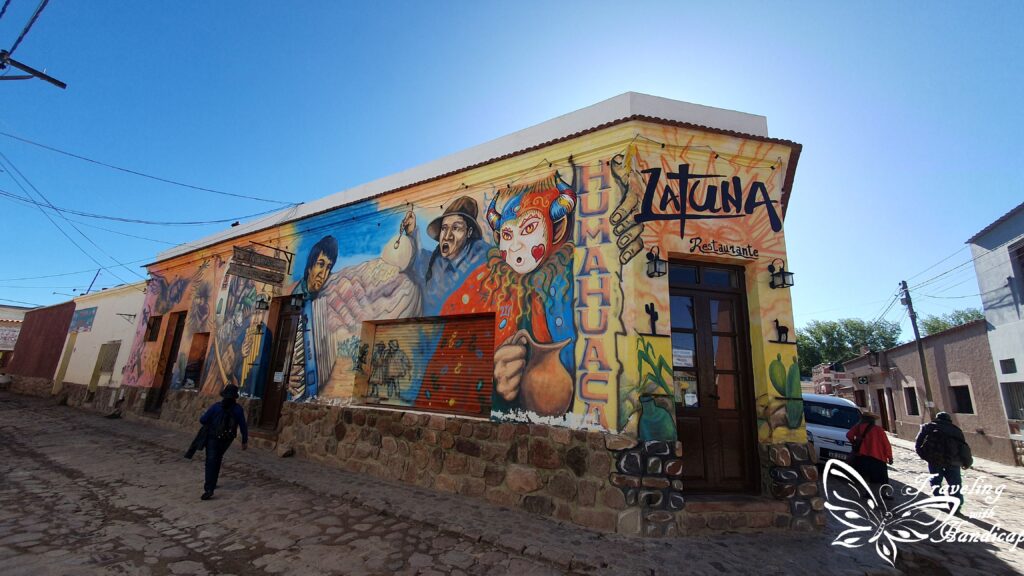
Huamahuaca
Huamahuaca is known as the starting point for the road to the Cerro de los 14 Colores. At the bus terminal of Huamahuaca, they sell 4×4 tours to Hornocal (which is the viewpoint). All providers have the same price, so it doesn’t matter who you agree with. They would fill up each other’s cars. They mention different times a day when you can start the tour from the bus terminal. Always check with some locals for the best times. The hostel owner told me, the tour at 12:30 midday would be best, because the sun hits the colors from the front between 13 and 15 o’clock.
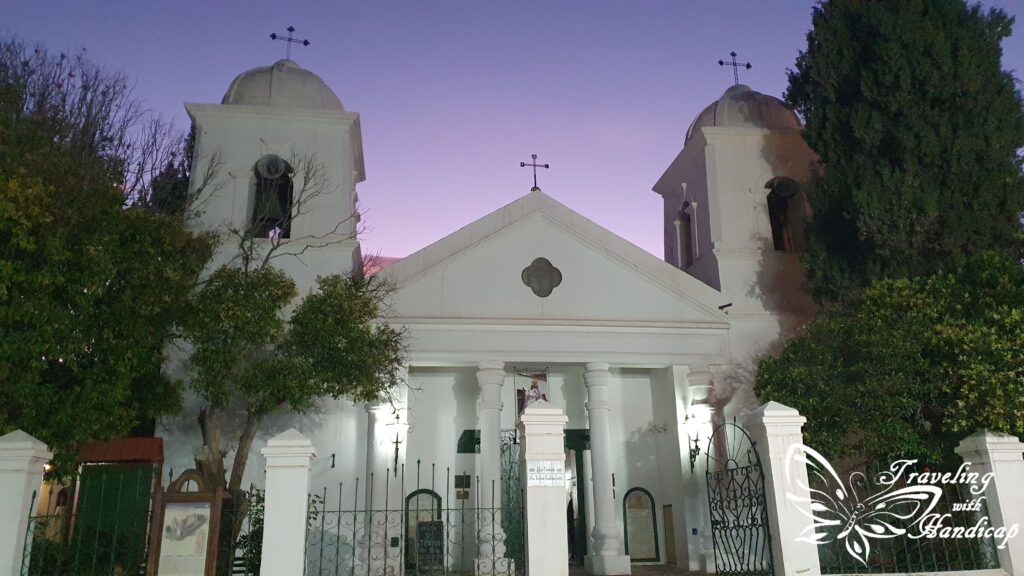
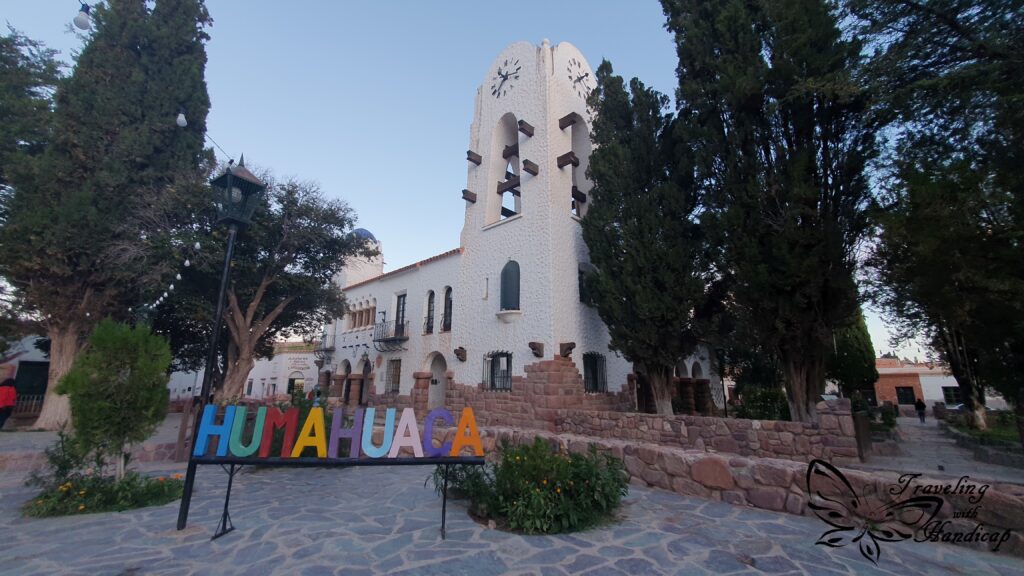

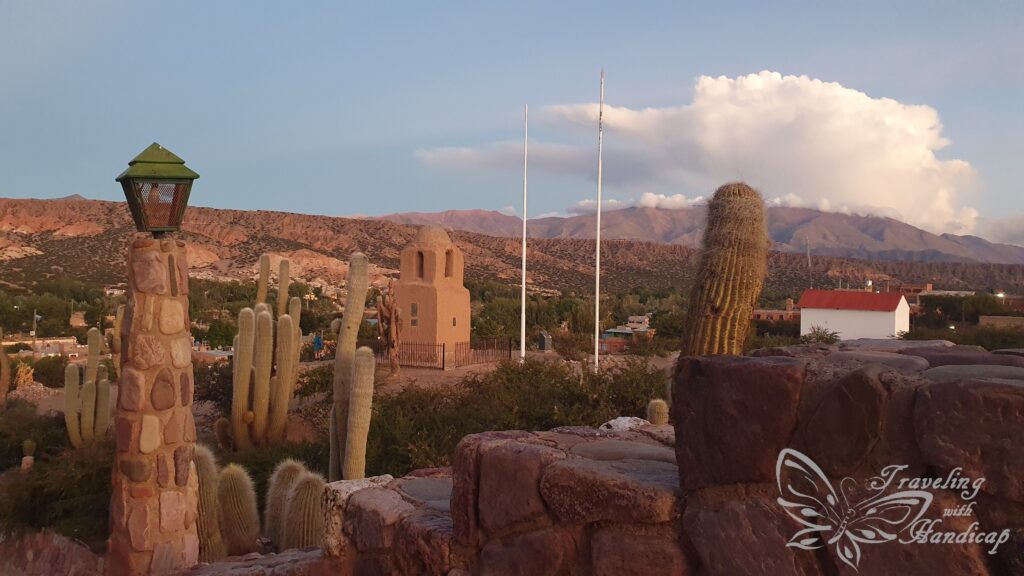
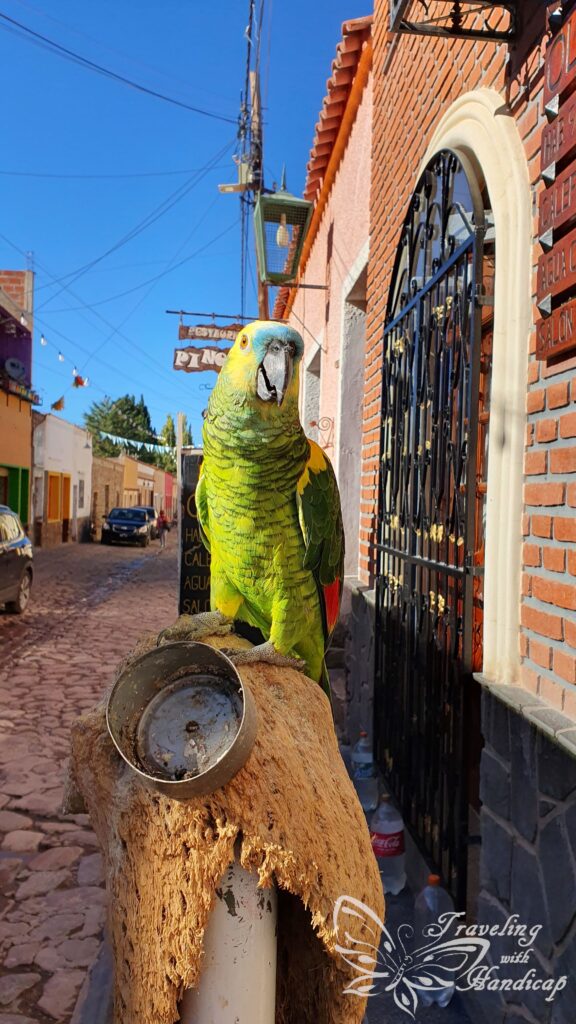
Hornocal
There are far fewer tourists at Hornocal compared to Purmamarca, especially because it’s a lot further away from Salta or San Salvador de Jujuy. The mountain range is a lot more impressive than the 7 colors. So if you have the chance to visit Huamahuaca and if you need to decide between 7 colors and 14 colors, pick the 14. The viewpoint is at above 4000 m altitude. Both a good preparation for Bolivia and an experience. I haven’t had any problems with altitude sickness. Most likely because I gave myself enough time at altitude to adjust, didn’t take heavy meals and drunk a lot of water.
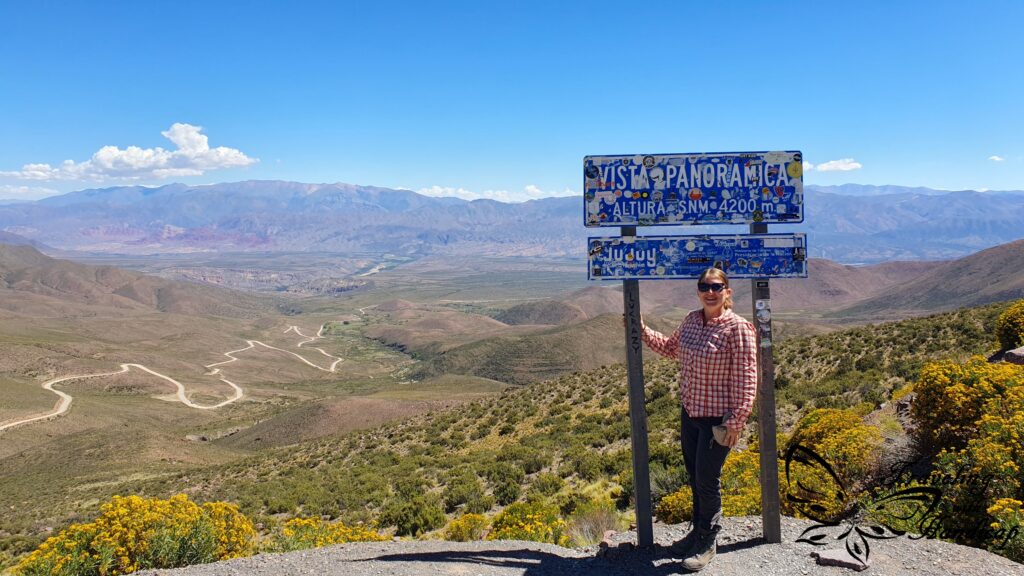
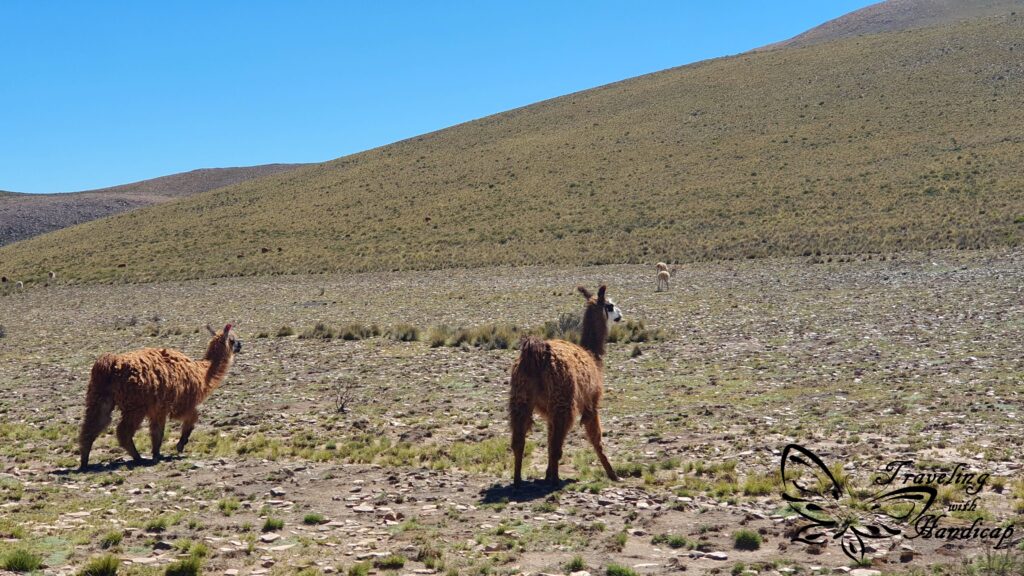
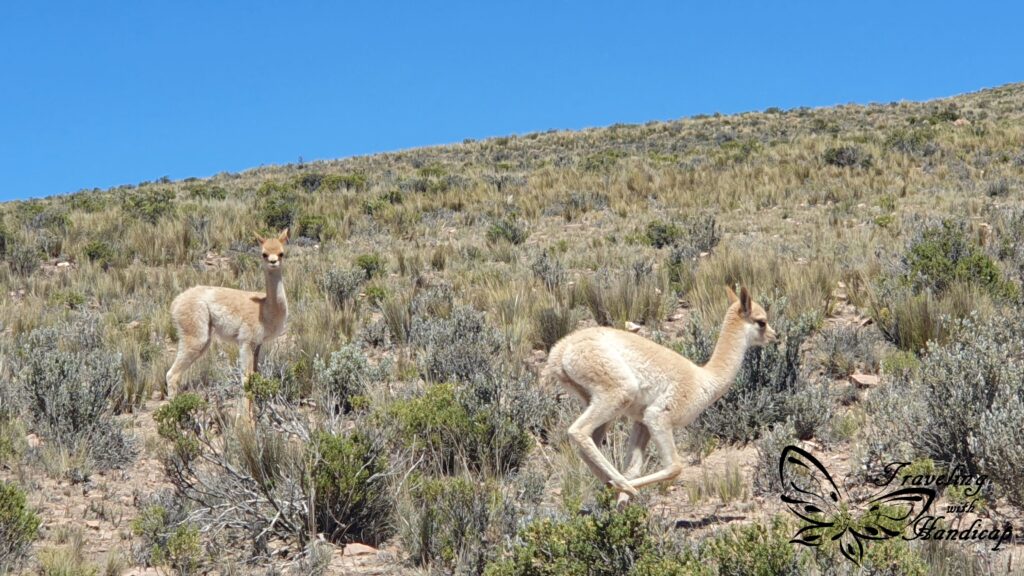
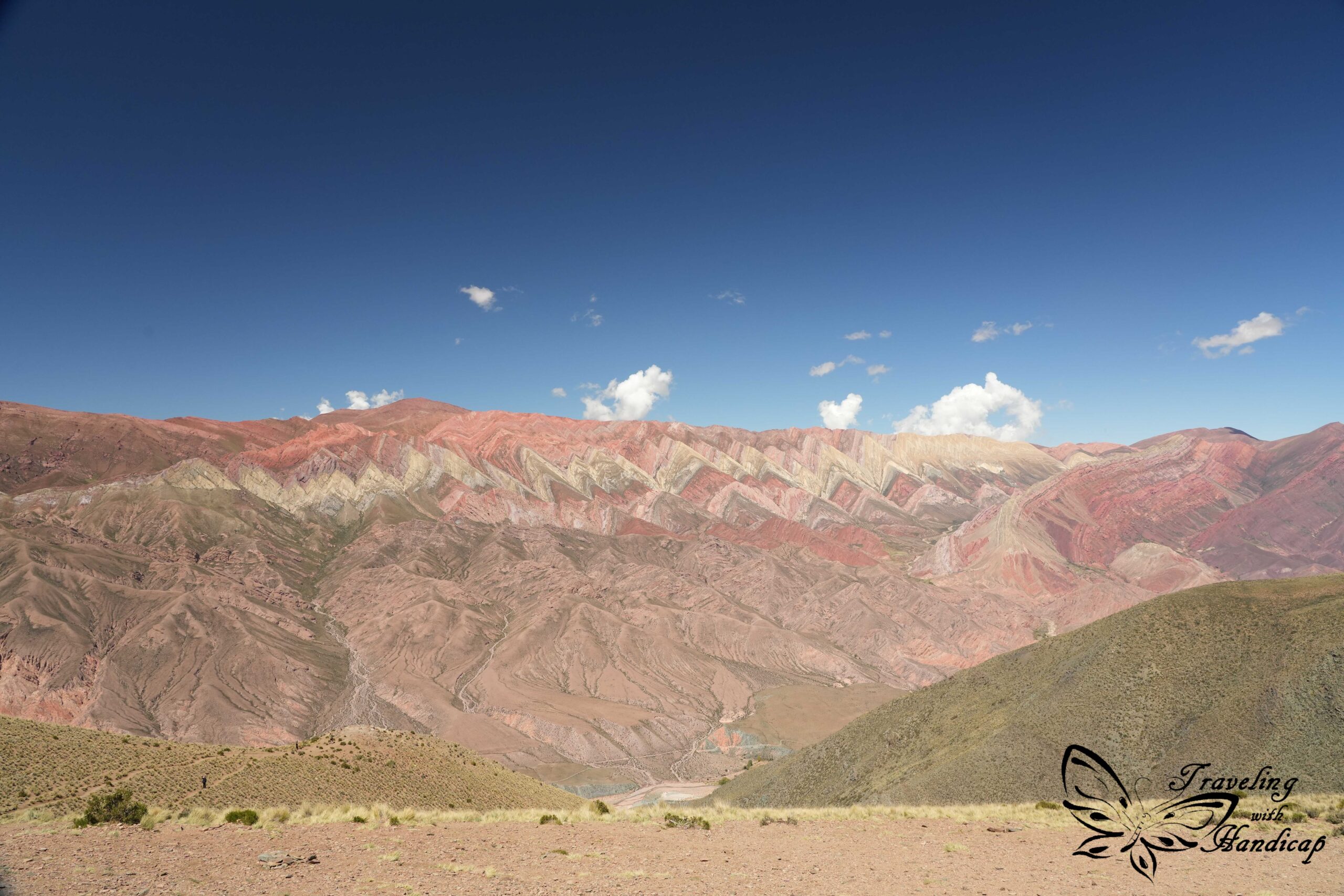
La Quiaca & border crossing into Bolivia
From Huamahuaca, I wanted to take the bus to La Quiaca and cross into Bolivia from there. The only buses which – as I read – would start in Salta. From Huamahuaca, the final stop is La Quiaca, the border has to be crossed on foot, and another bus taken from Villazón (border town in Bolivia).
However, when I was about to leave Huamahuaca, my hostel owner informed me that the Bolivians would block the border, it would only reopen during the weekend. So I stayed in a hostel in La Quiaca for 2 nights until I could enter Bolivia. La Quiaca is not special, you don’t need to stop there. However, it’s also not bad, so I’d rather stop in La Quiaca than in Villazón. I used the day to sort out photos from my destinations in northern Argentina and relax.
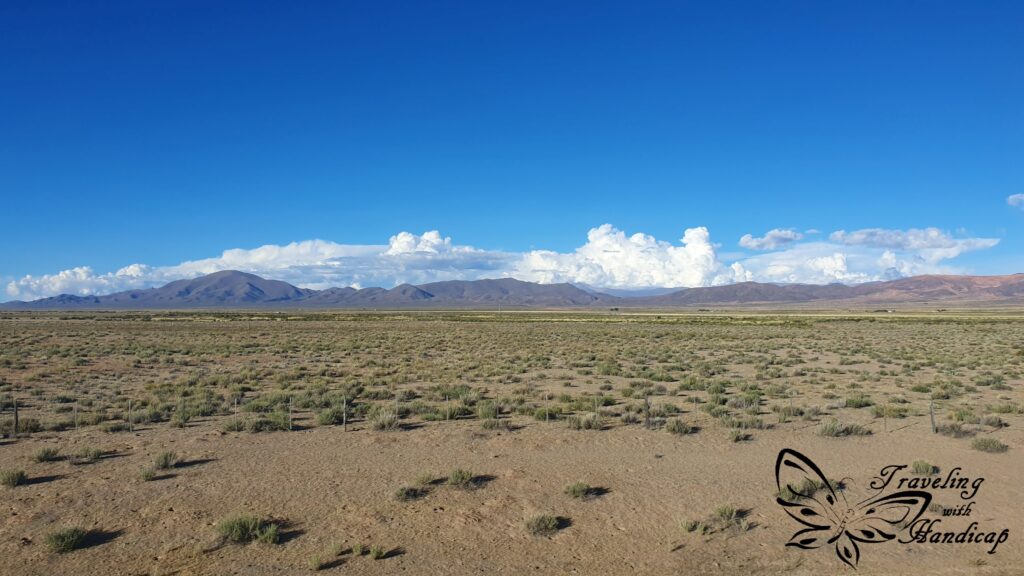
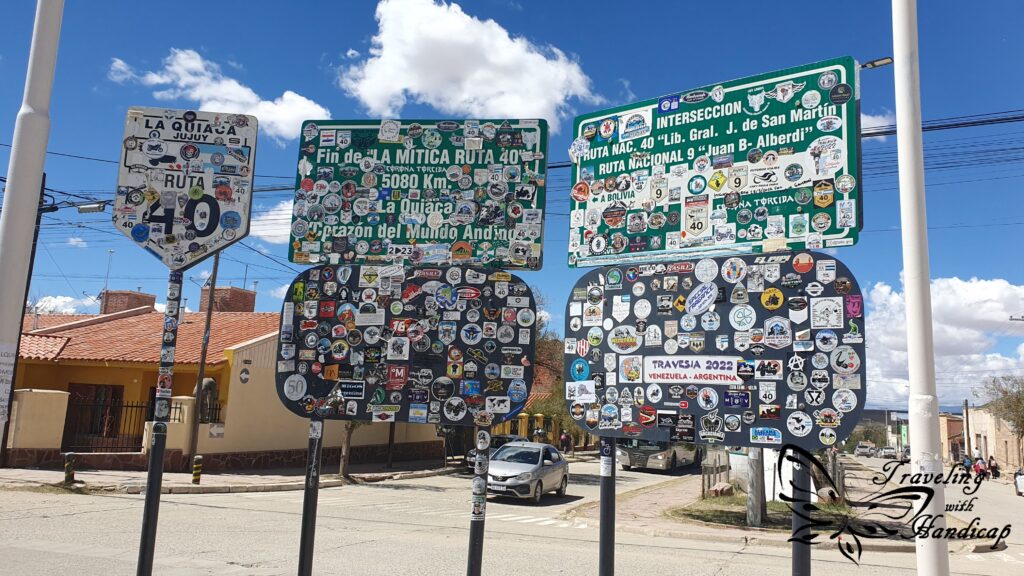

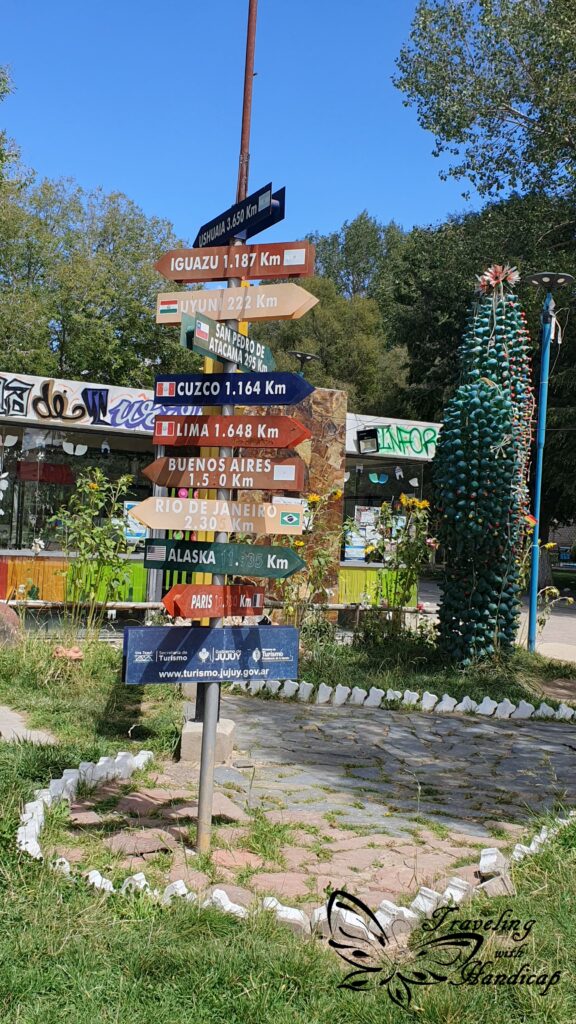
The border crossing
Someone in the hostel heard about a short time window at 10pm to get the stamp for entering Bolivia, we would be able to get back through the river and the next day just enter through the river, without queuing. So I went to the border with a group of people from the hostel, all stranded, to check the border. It wasn’t open, the Argentinean lady informed us about the opening at 7am the next day. I got up early to be at the border at 7am, there was a little queue already.
I could pass the Argentinean side quickly, since I asked if they have any assistance for people with disabilities. They didn’t have assistance, but let me skip the queue. We had to wait for almost one hour to be able to enter Bolivia. I am not sure if that is the true reason, but there was a time difference of 1 hour, so 8 am in Argentina was 7 am in Bolivia. So we could leave Argentina at 7 am Argentinean time and enter Bolivia at 7 am Bolivian time.


Villazón
In Villazón I exchanged a little amount of Argentinean pesos to be able to pay for the Minibus to Tupiza (very cheap). Don’t try out ATMs in Villazón, they are not trustworthy. I met people who told me their cards have been swallowed from ATMs in Villazón. Just exchange some Pesos for the bus, the ATMs in Tupiza or Uyuni are more trustworthy to get more money out. All other experiences that I had within the tour from Tupiza to Uyuni are part of an individual article. 🙂
Another province of north-western Argentina: Catamarca
I have not visited Catamarca, just to clarify. Nevertheless, I met other travelers who spent quite some time just exploring this region. So if you want to go to remote places where not many tourists go, explore Catamarca. If you check the map, you will recognize that there are both green and mountain regions.
